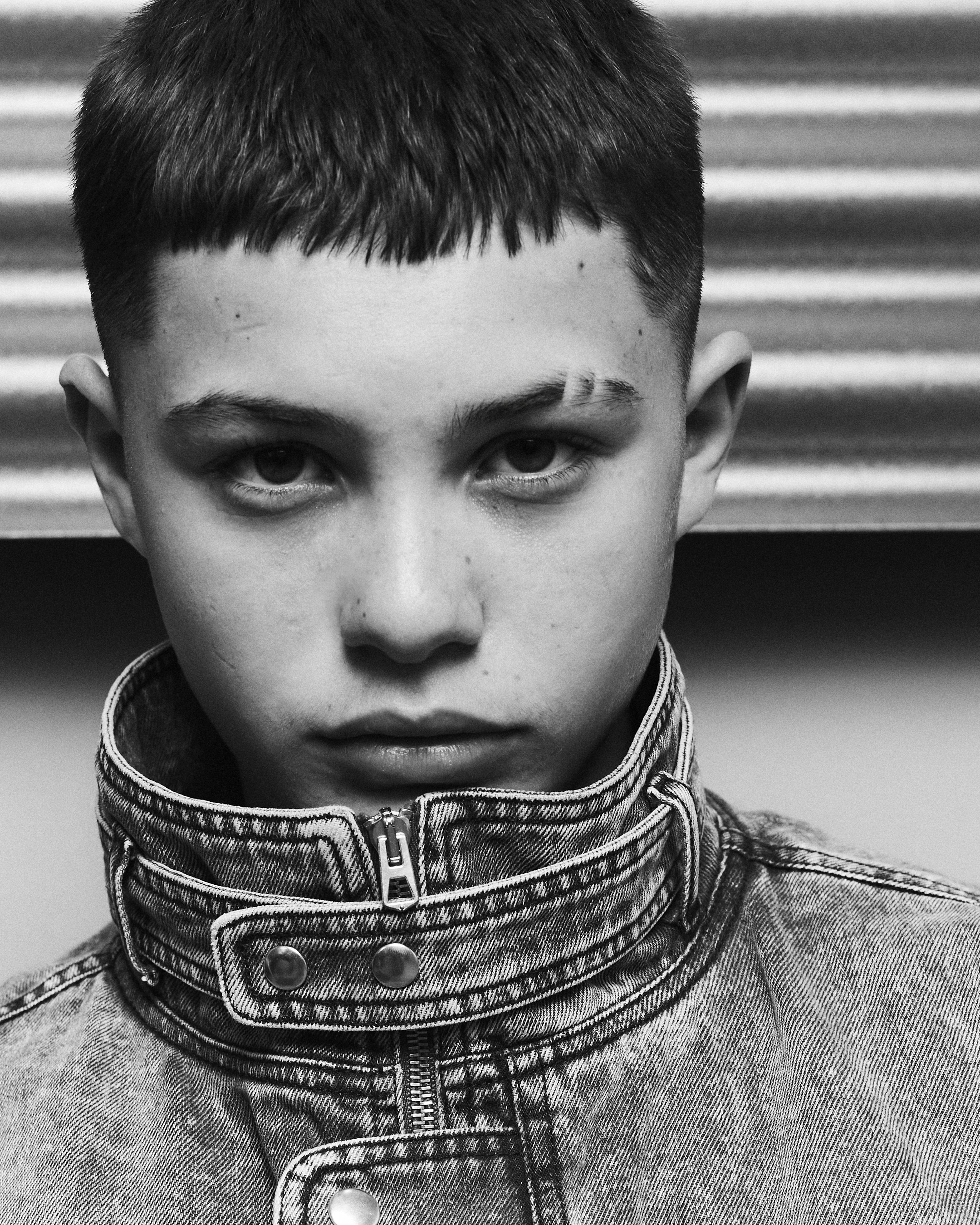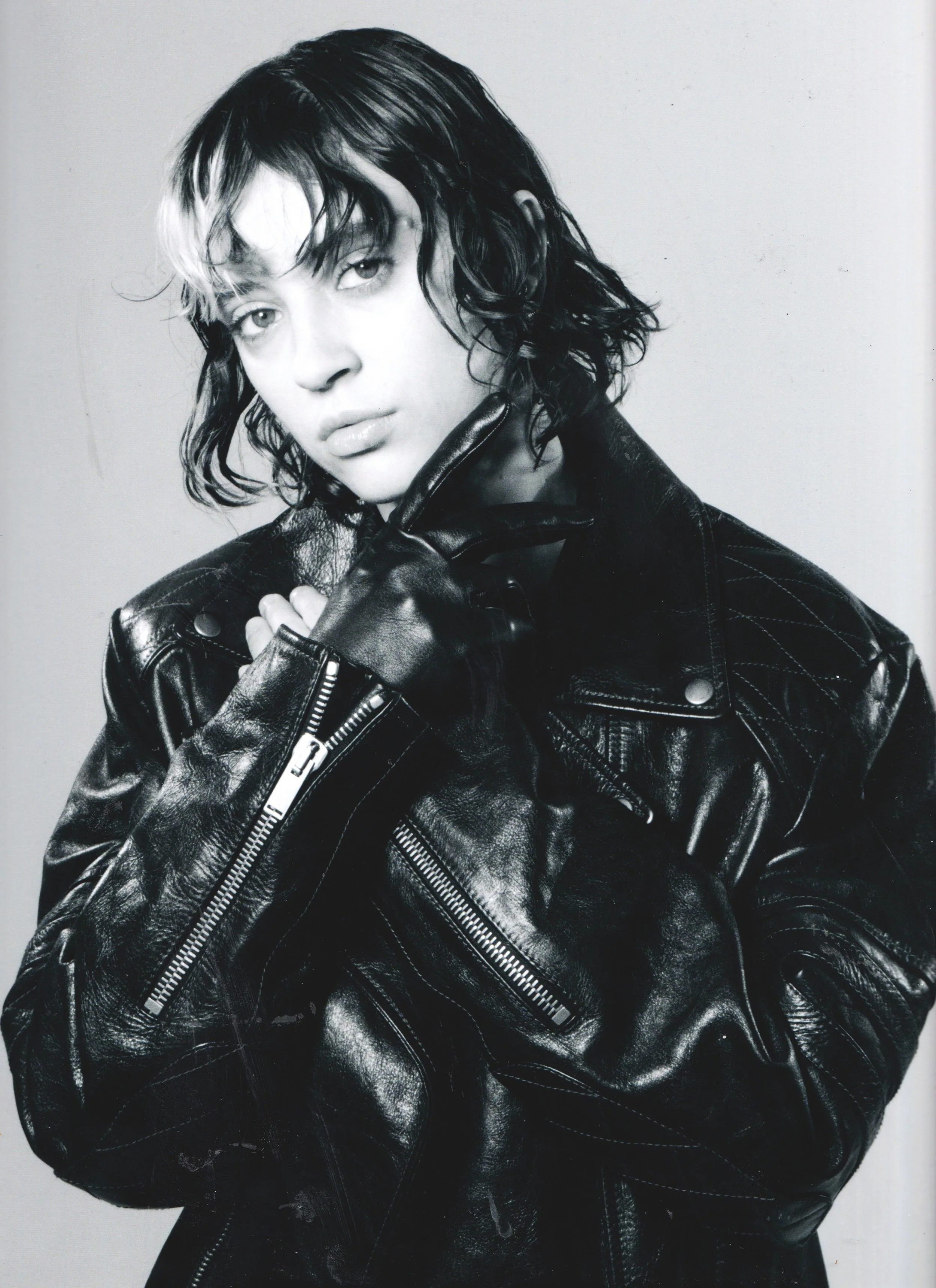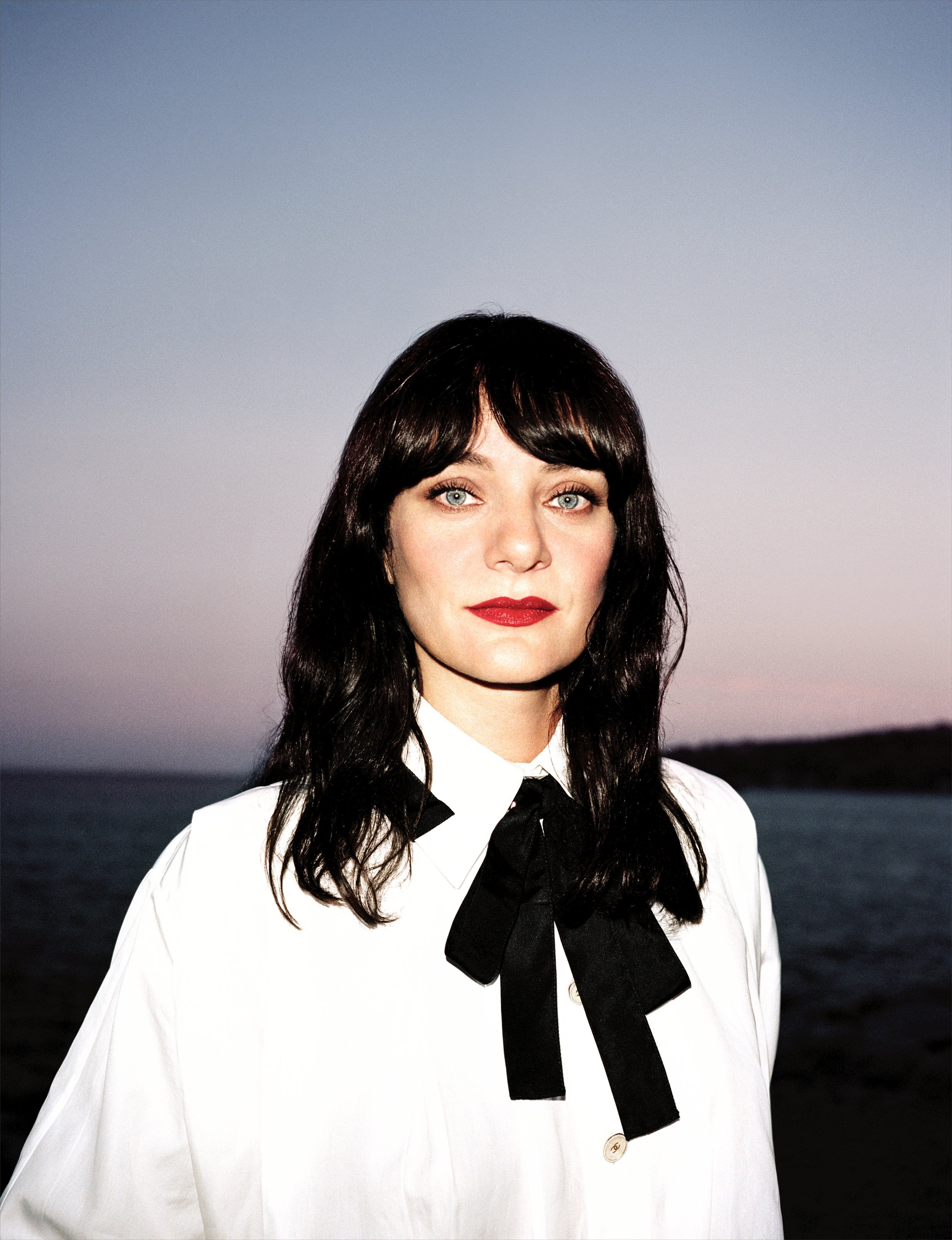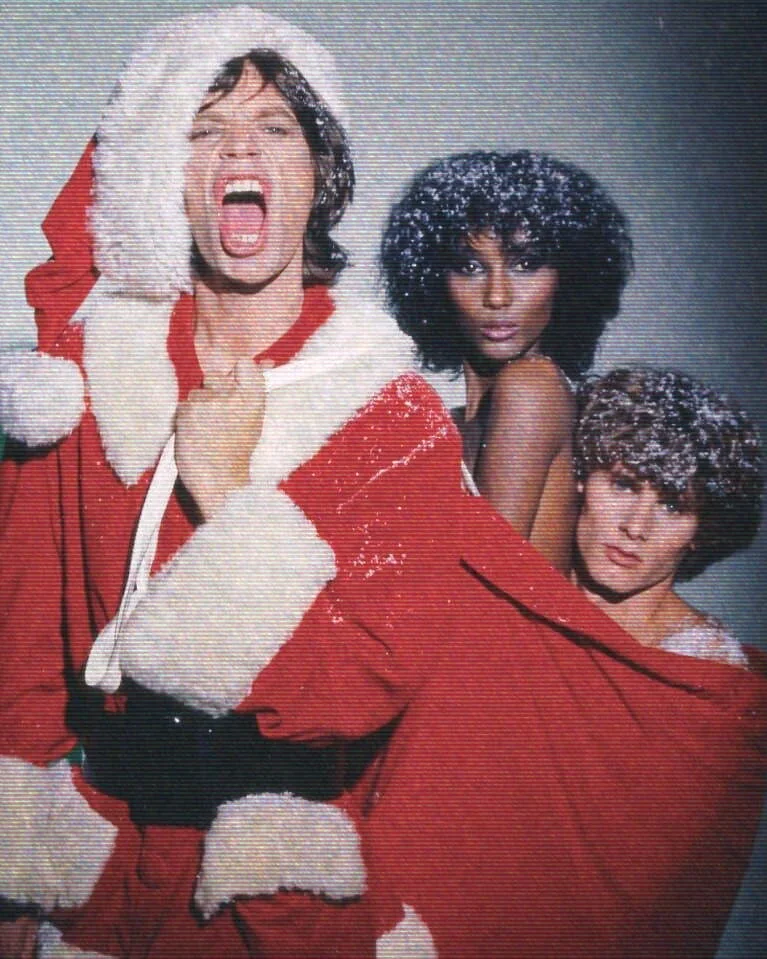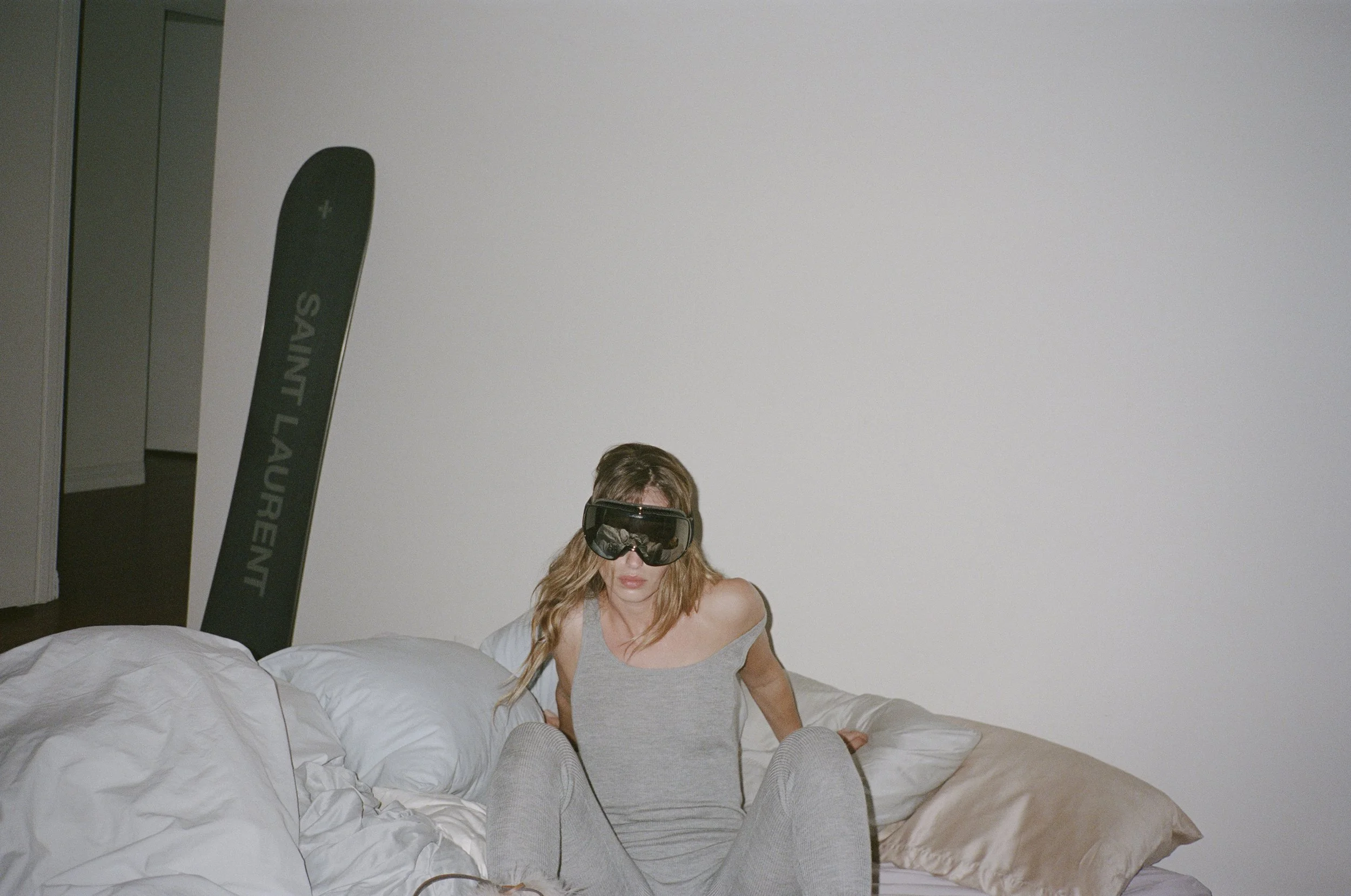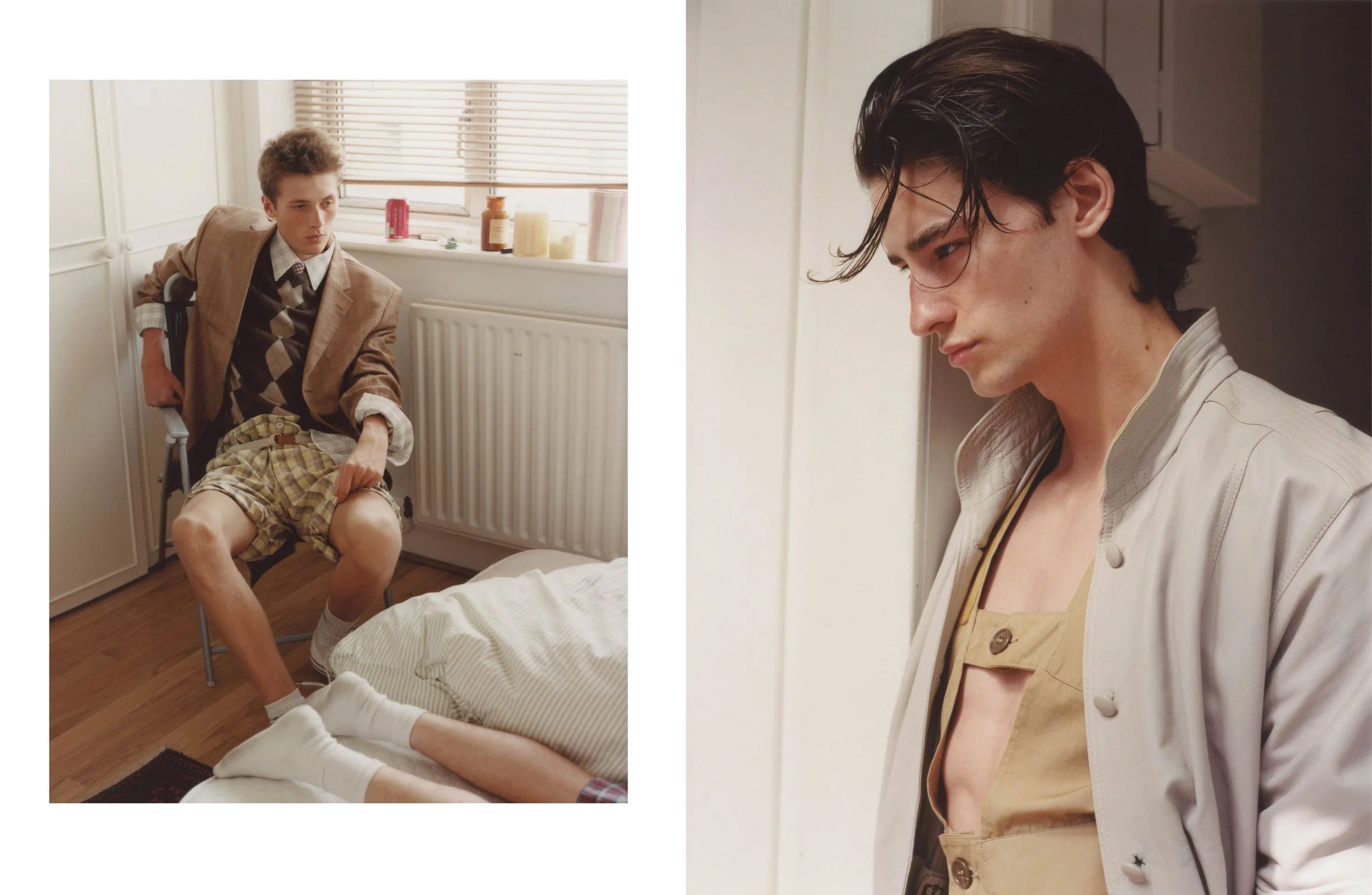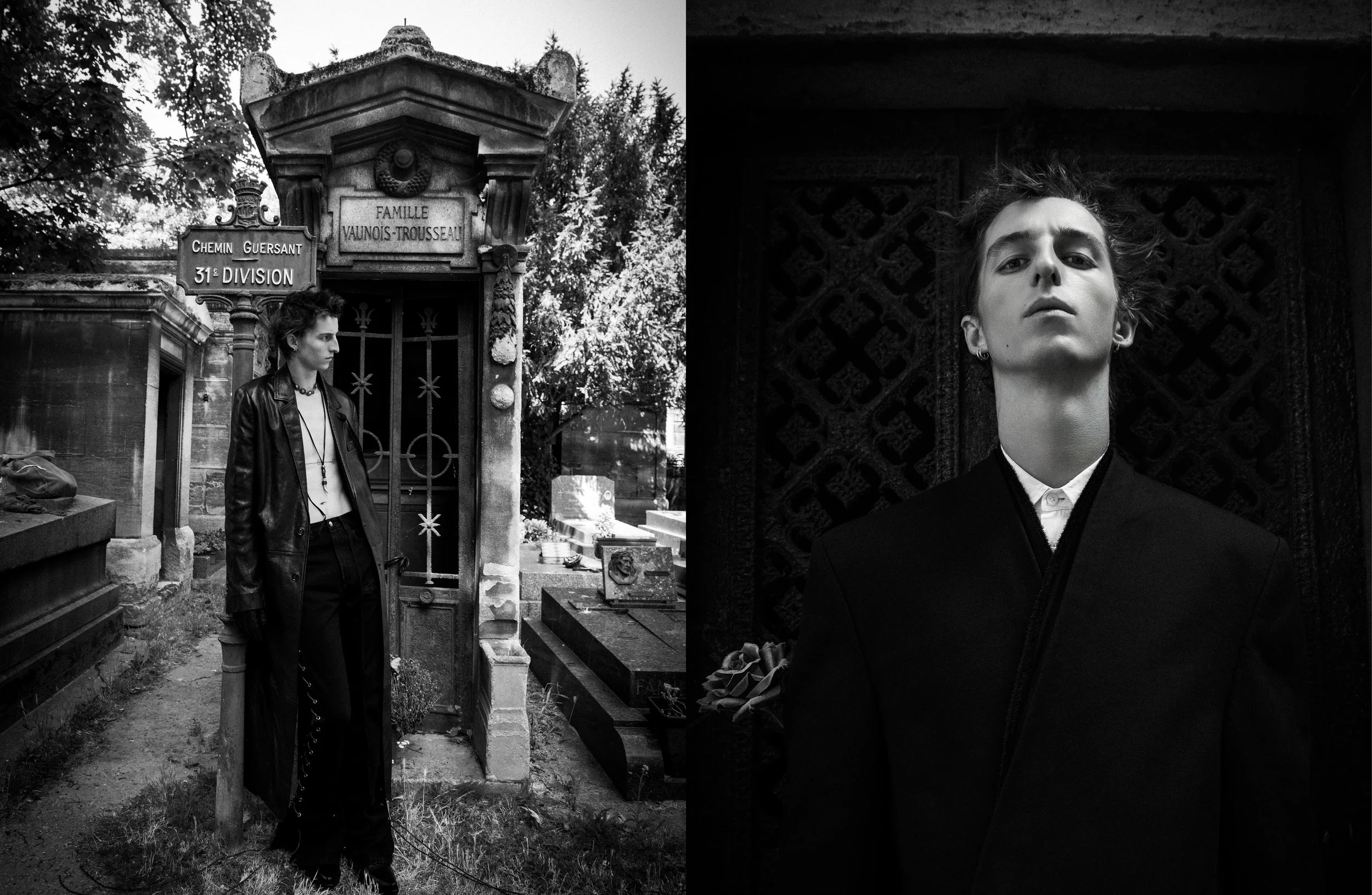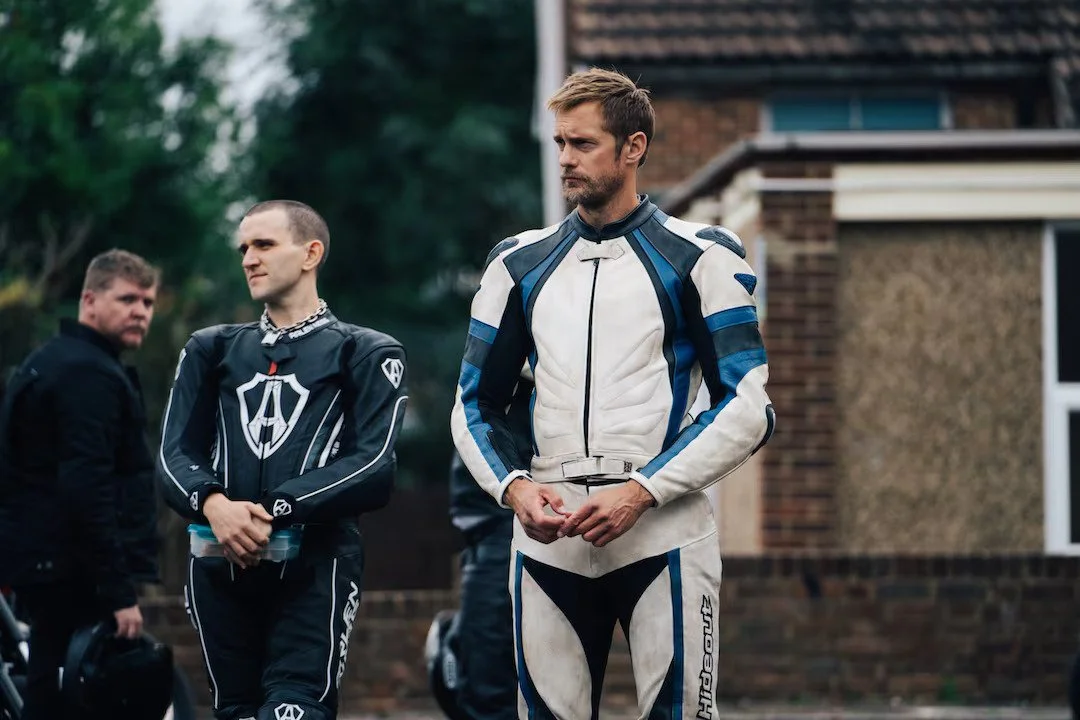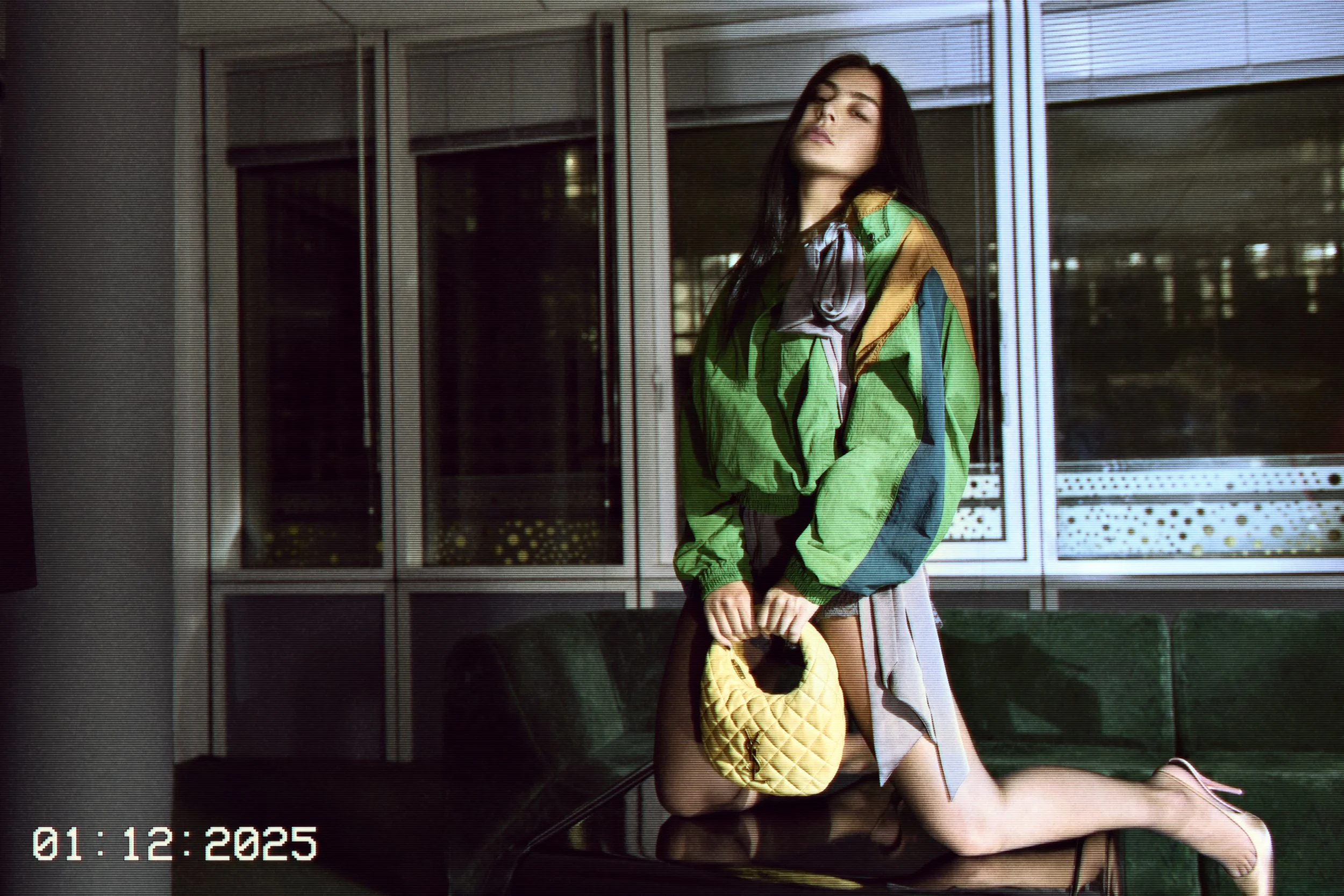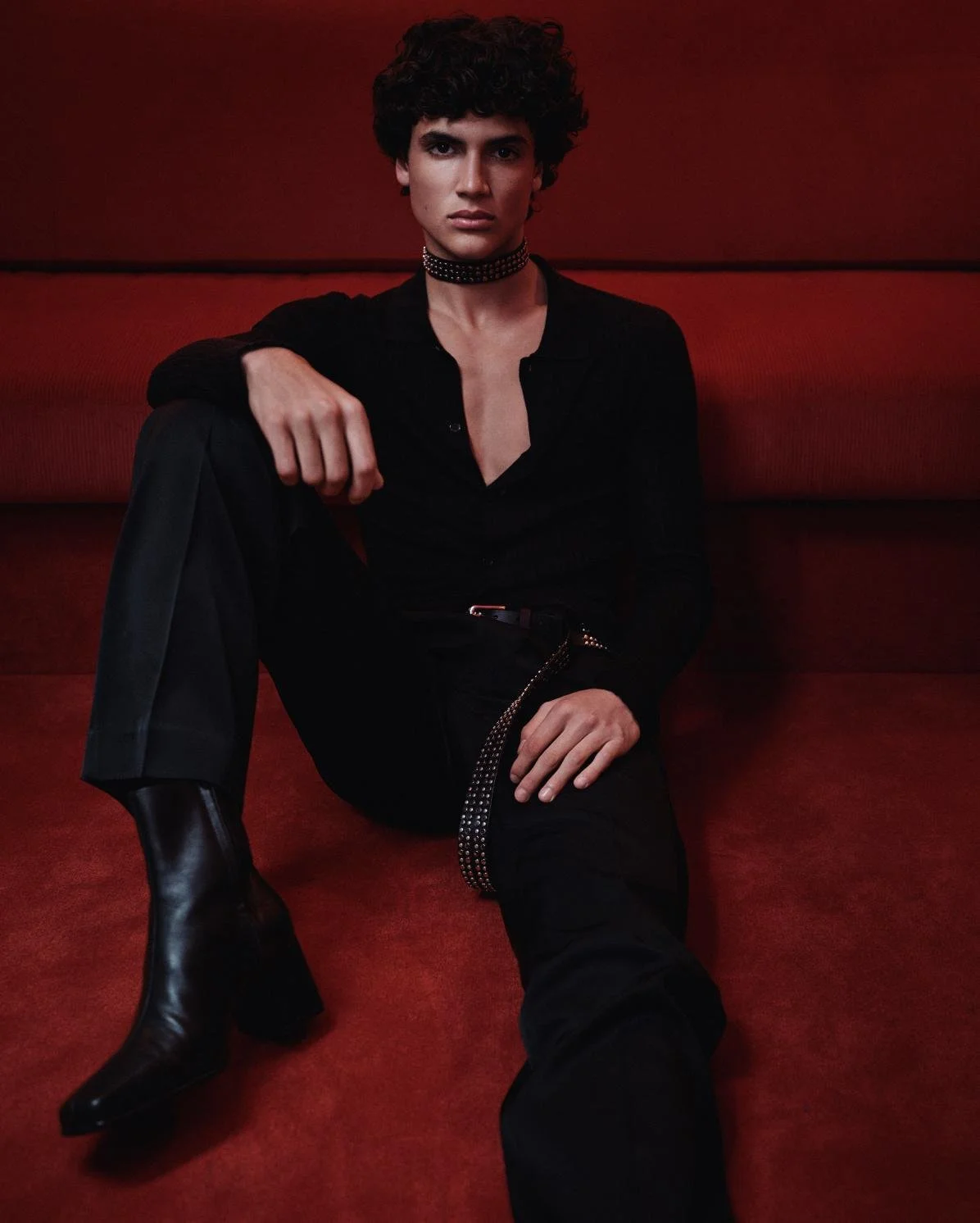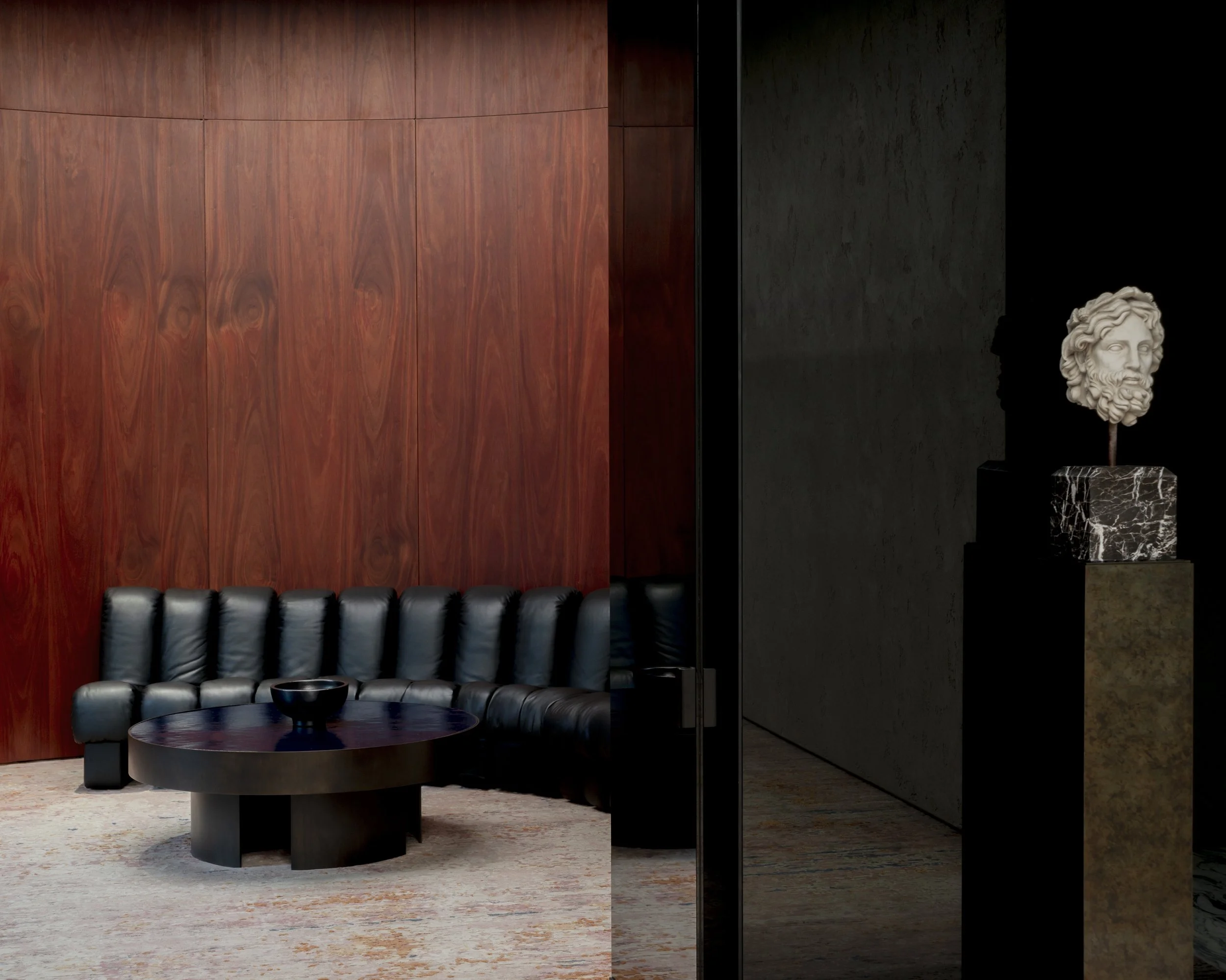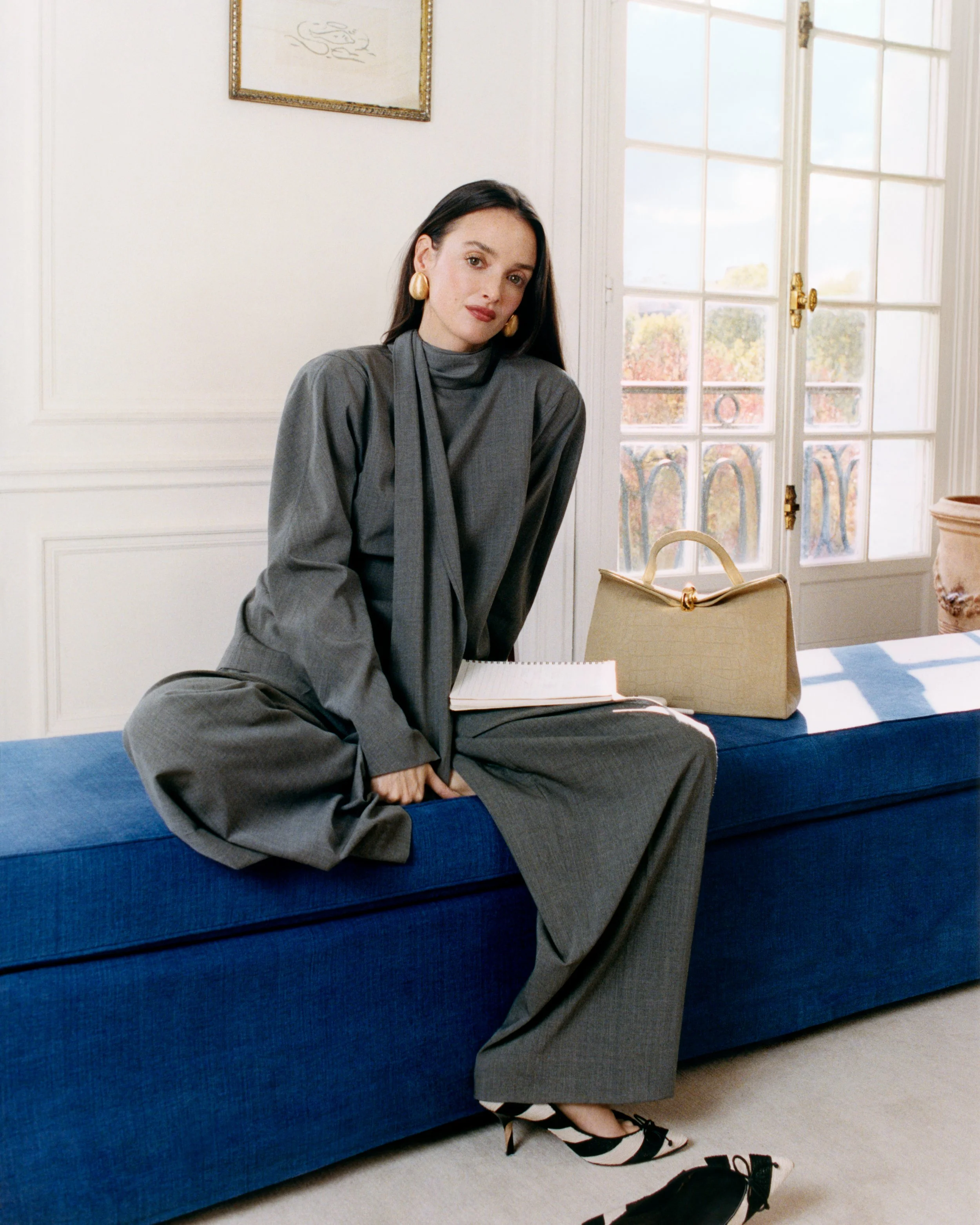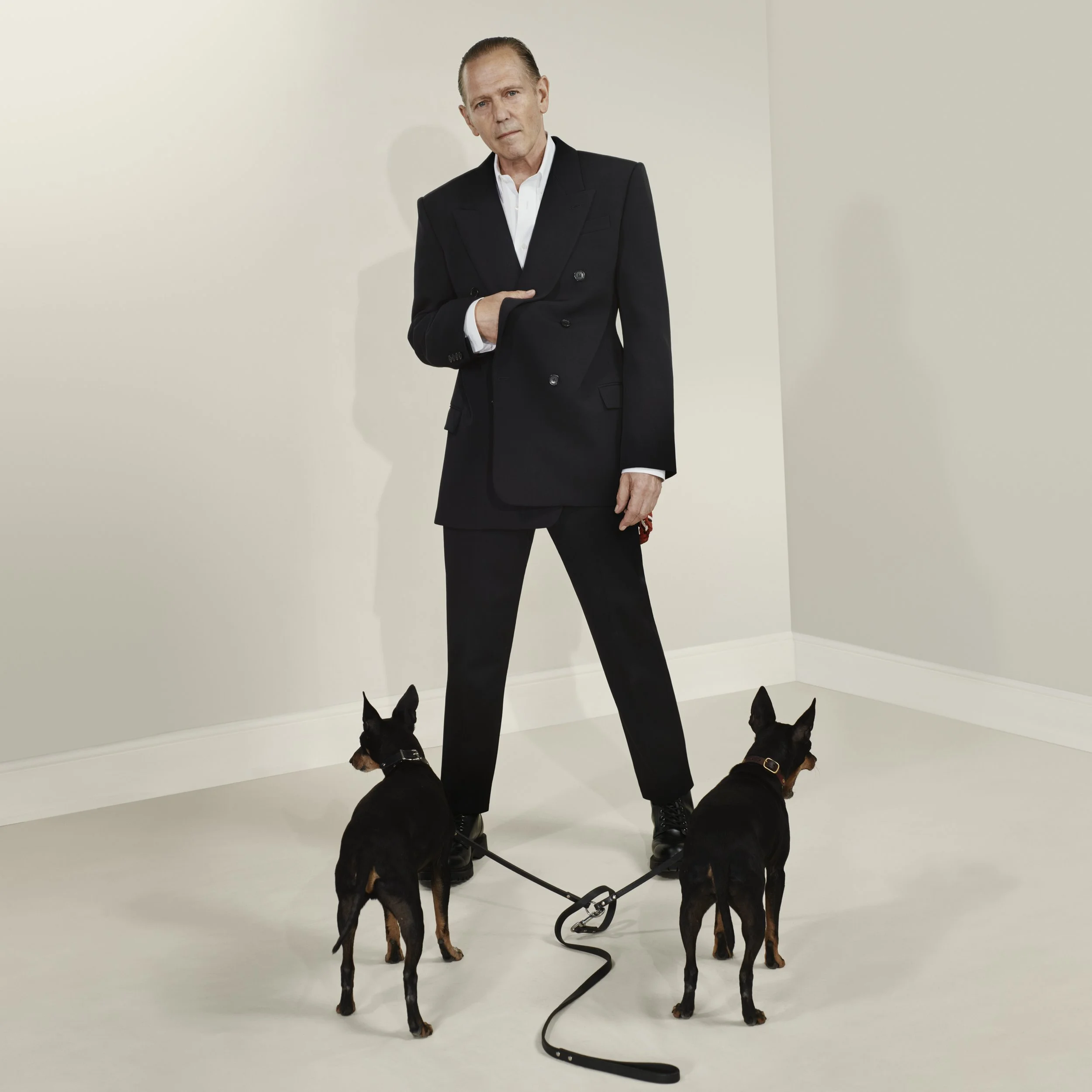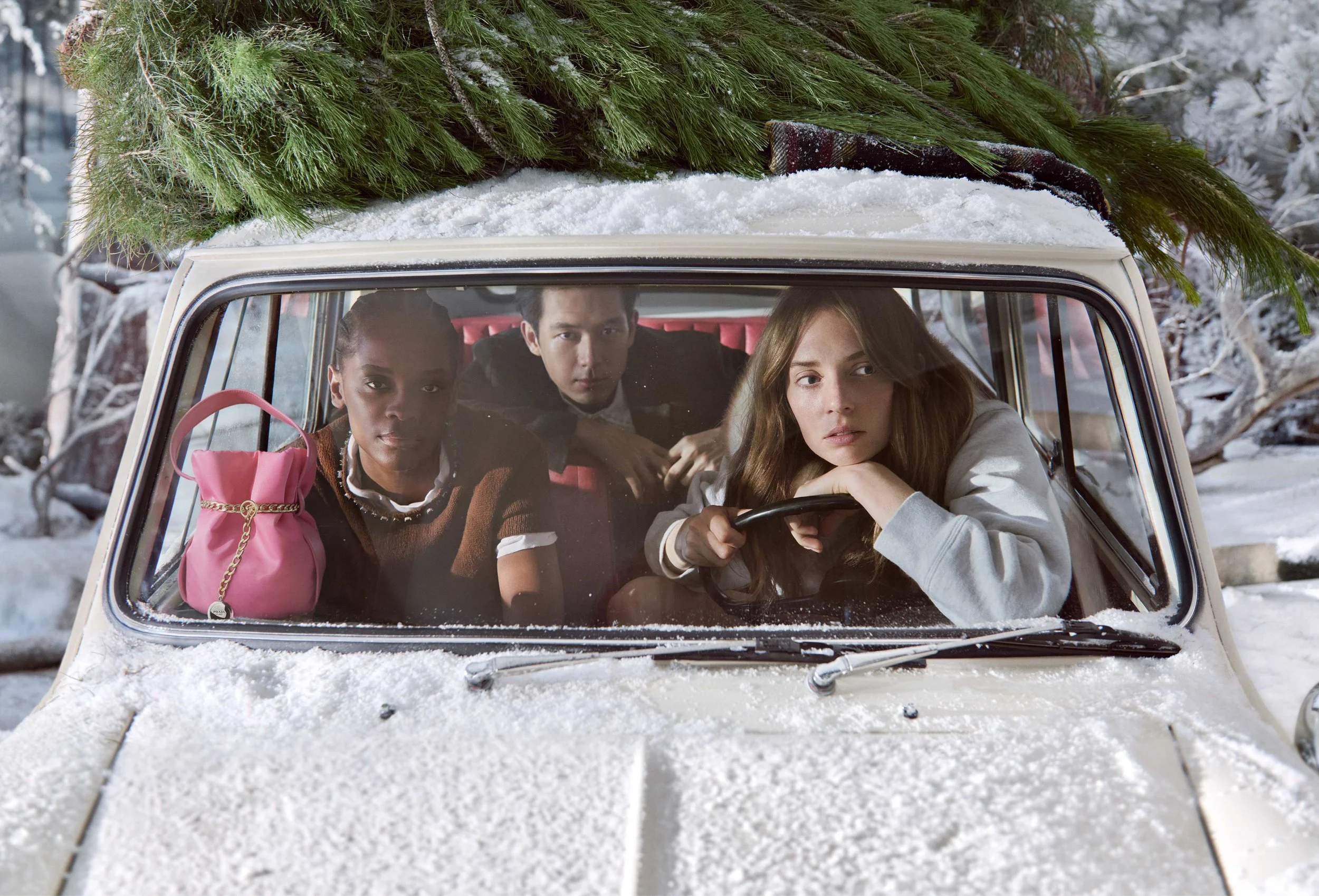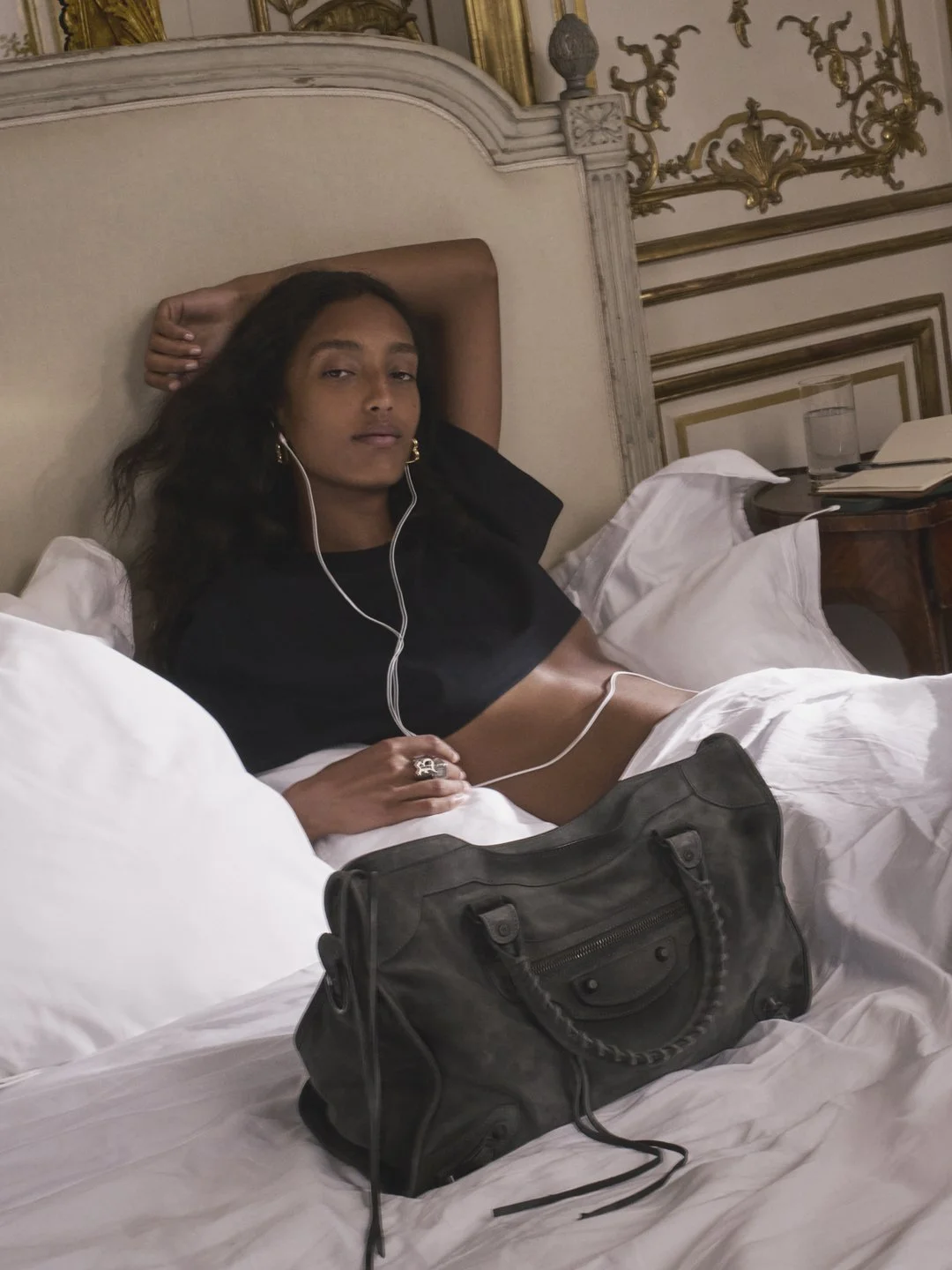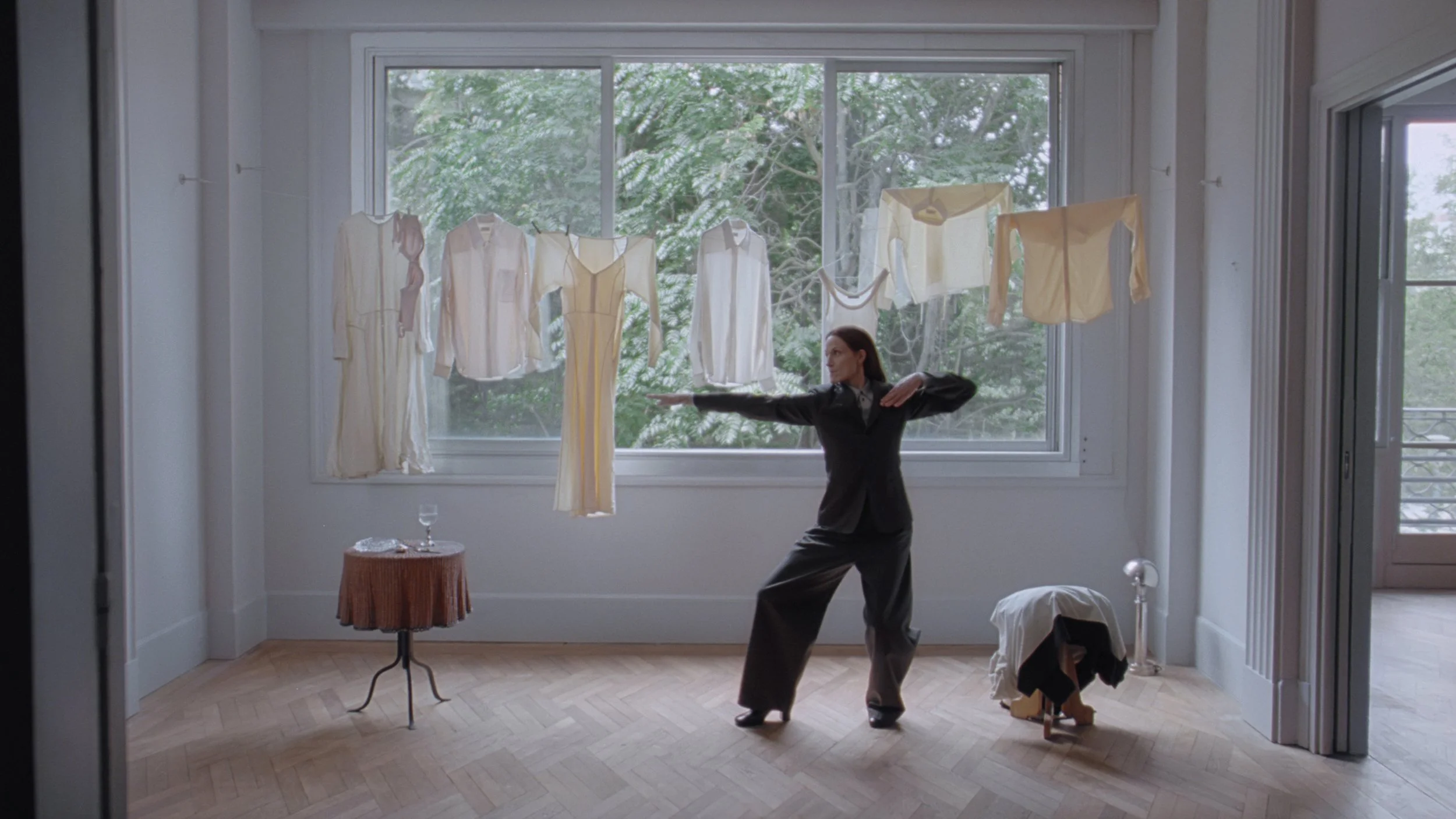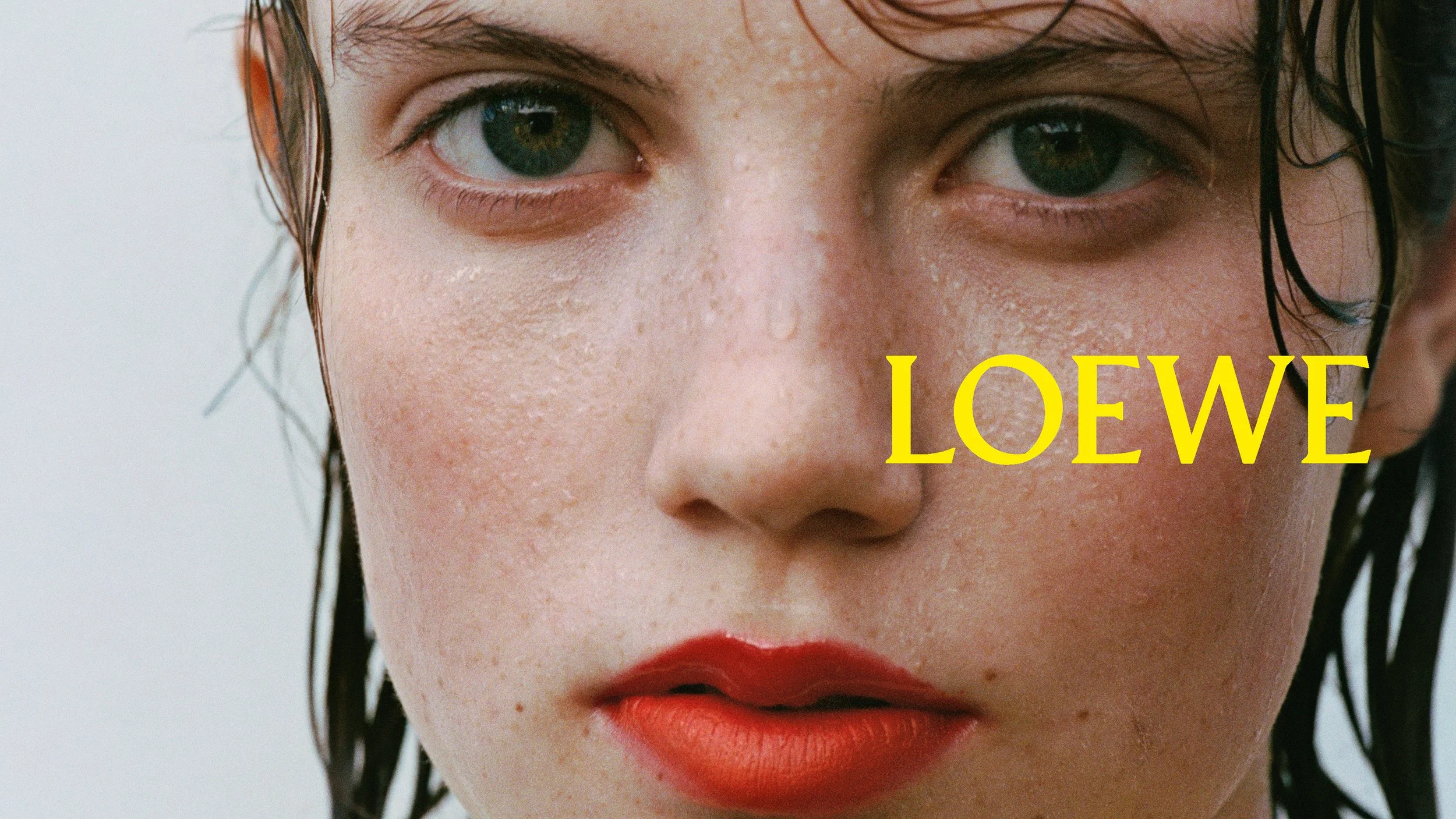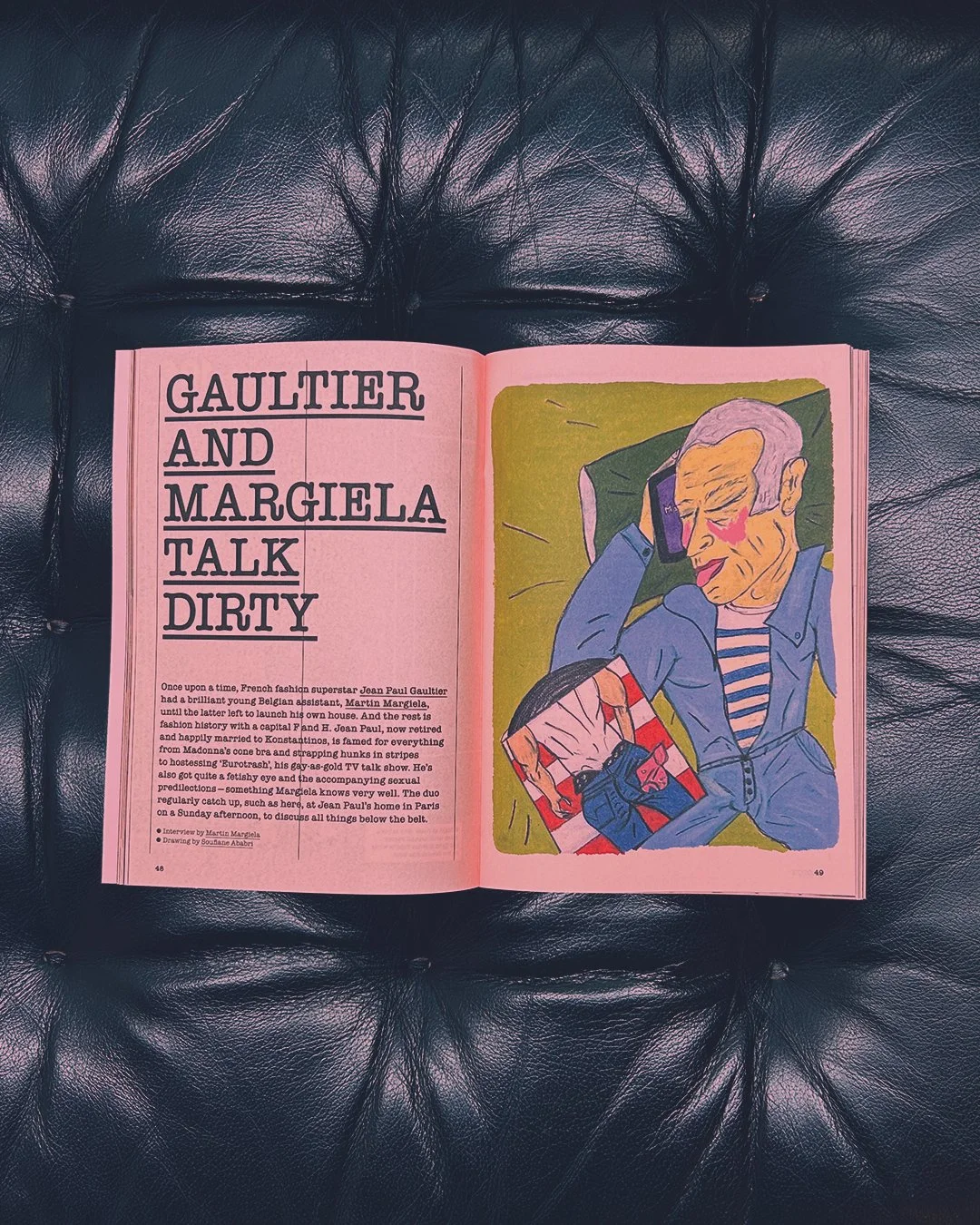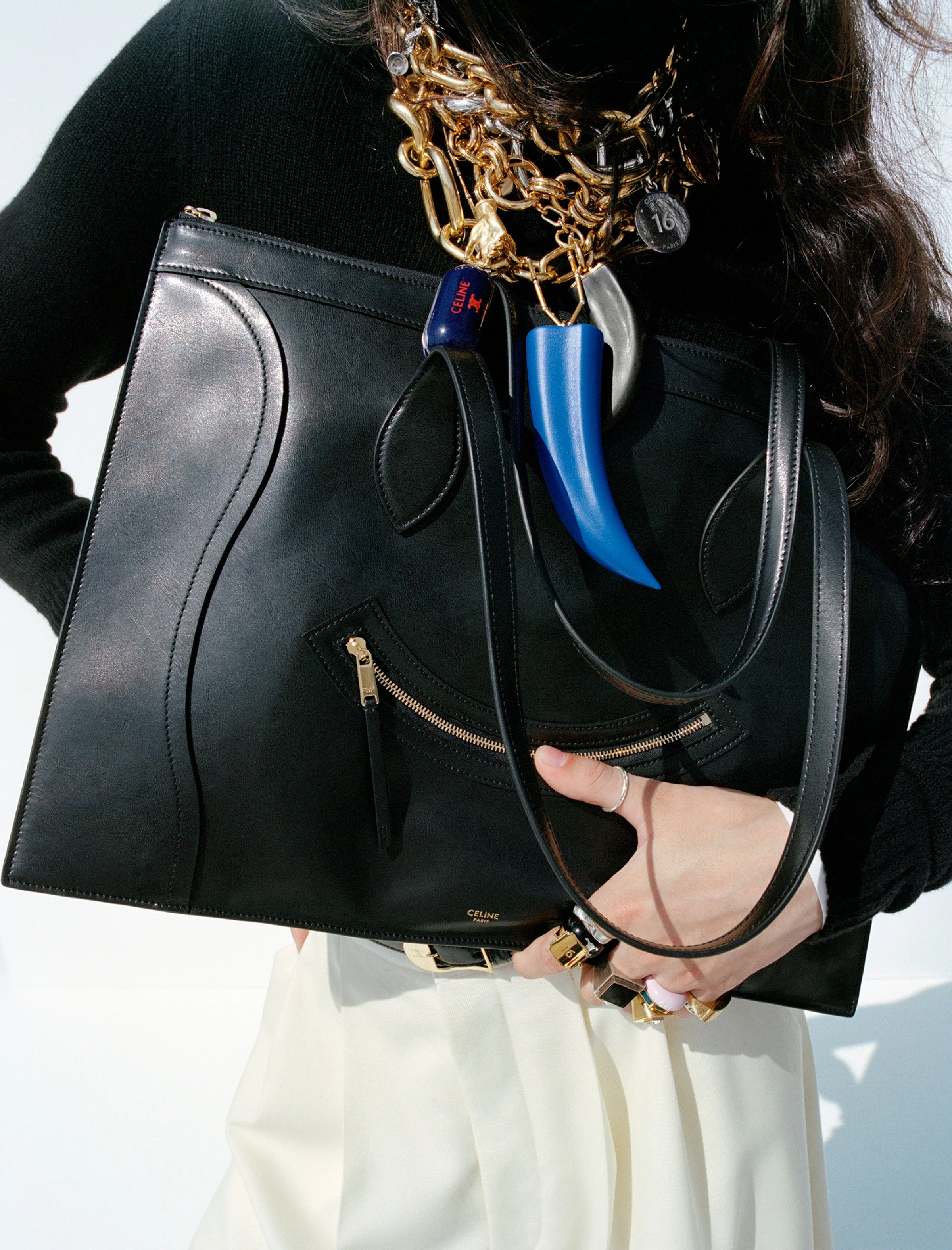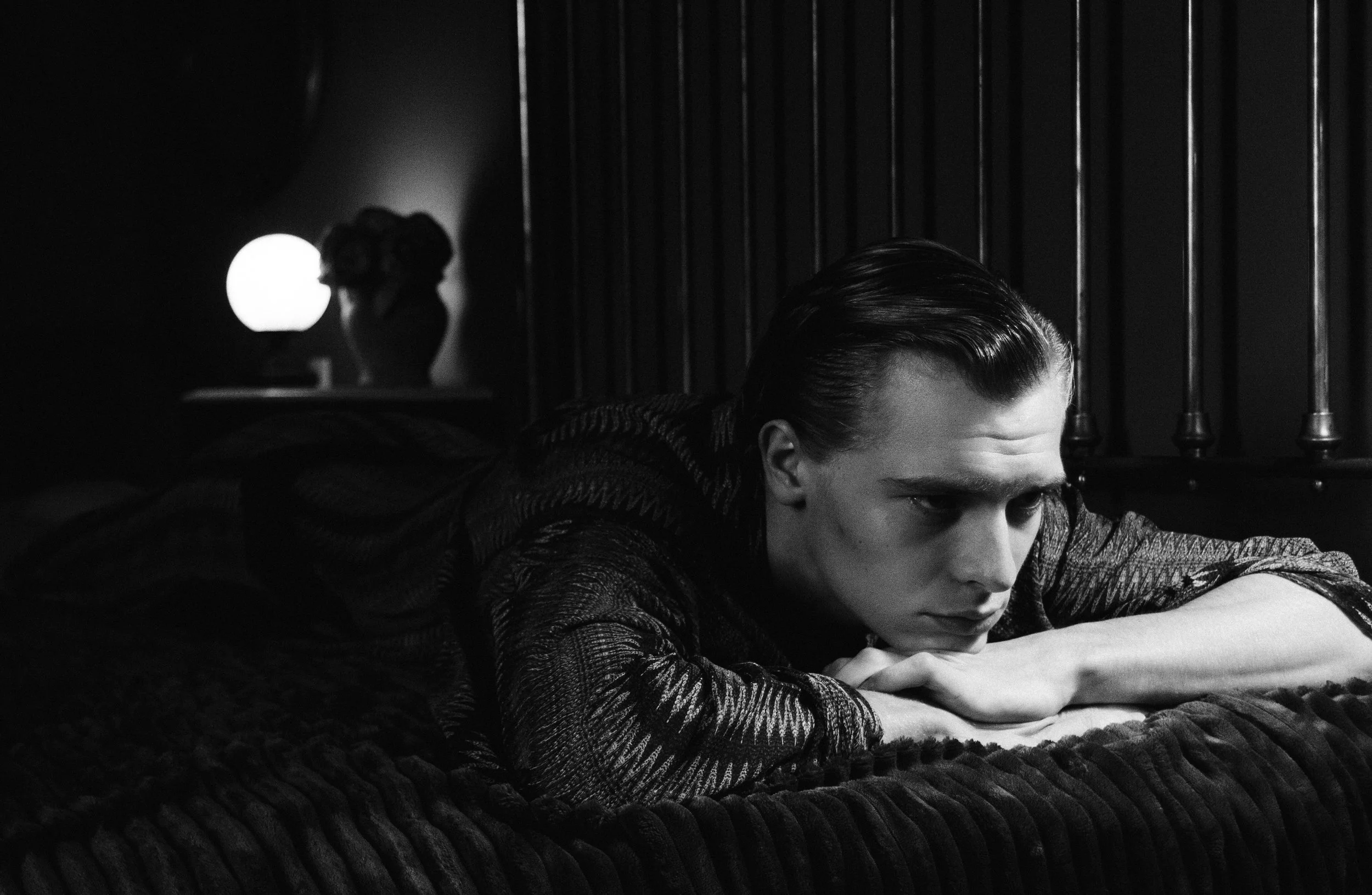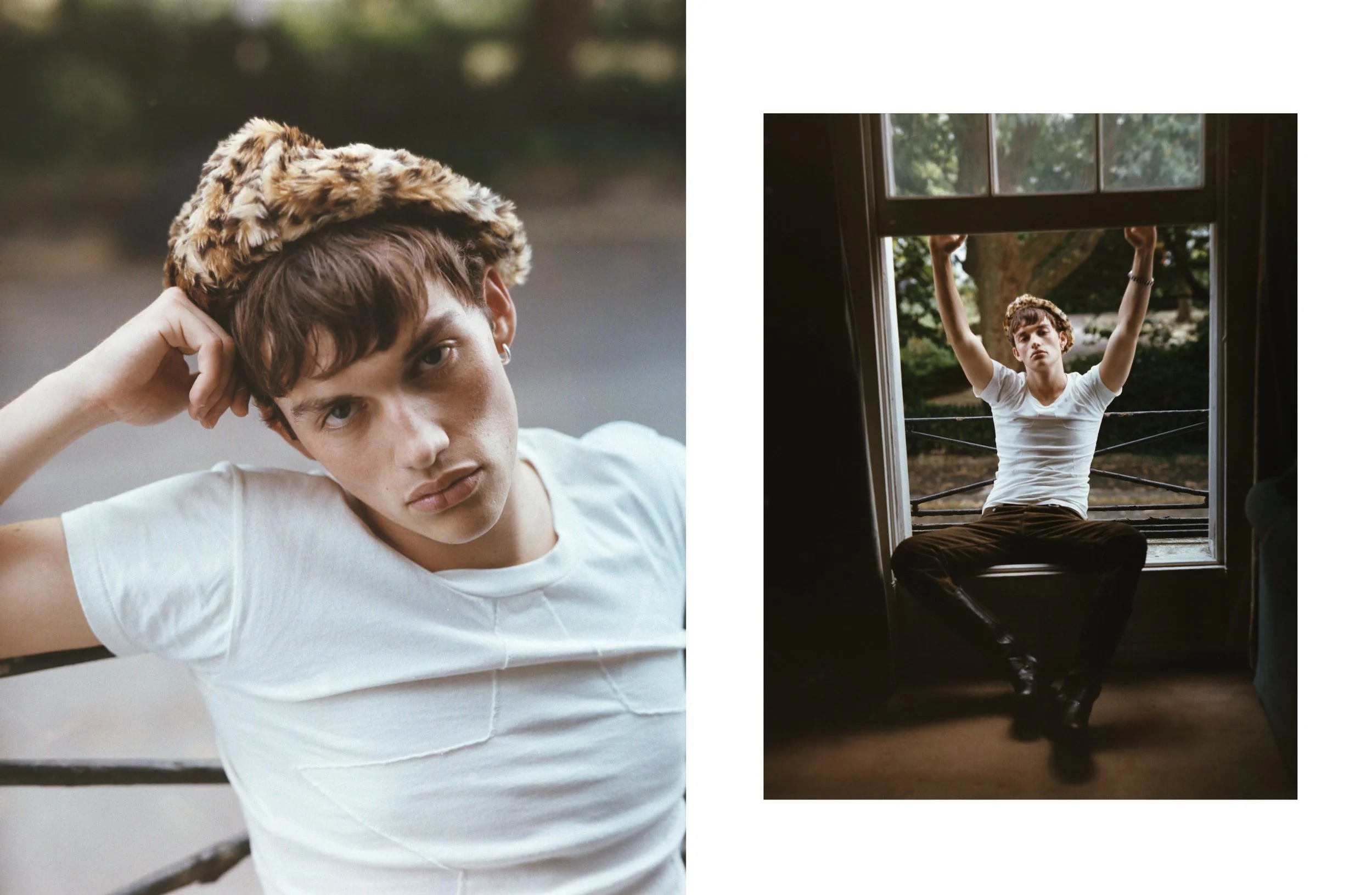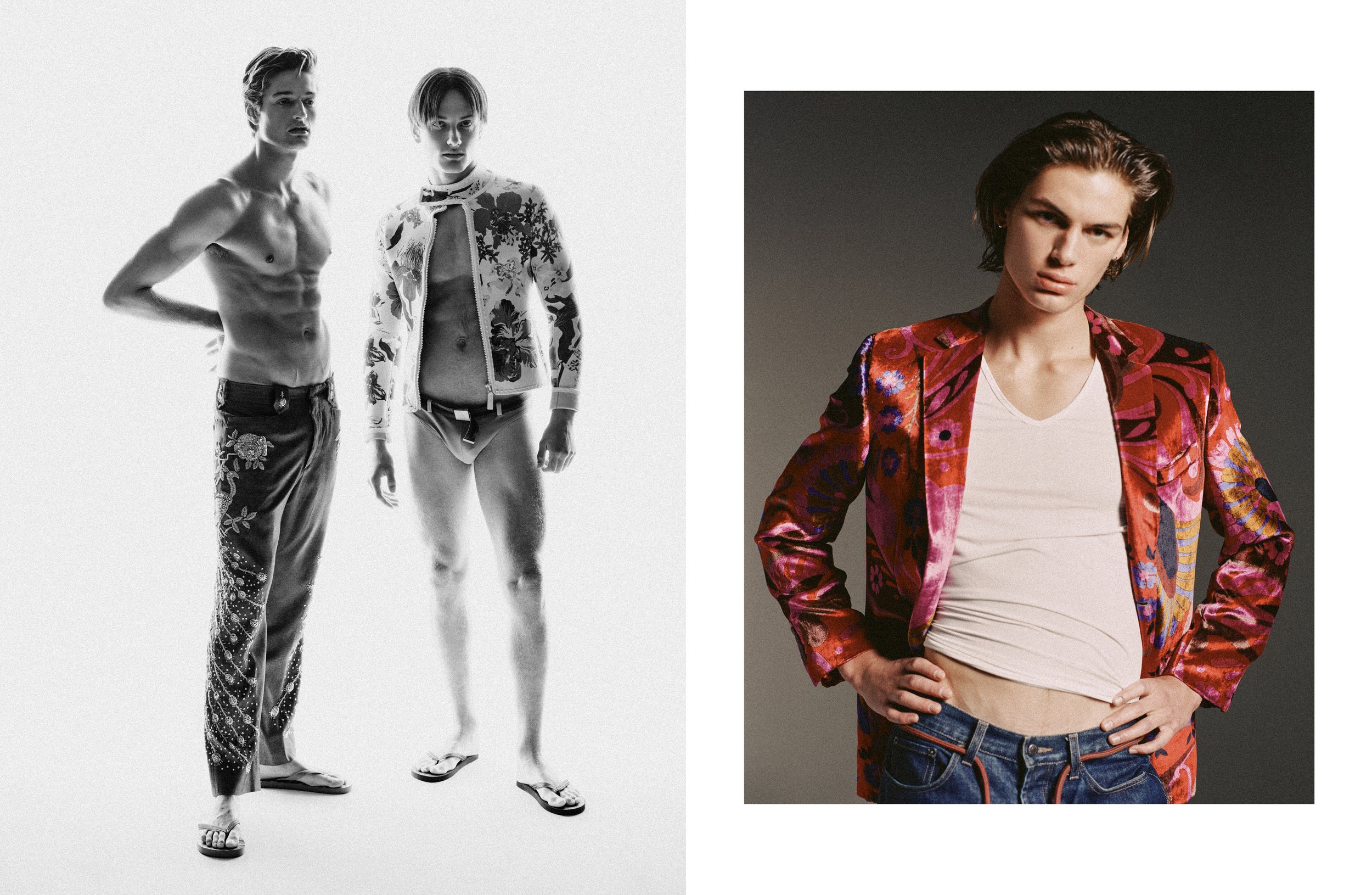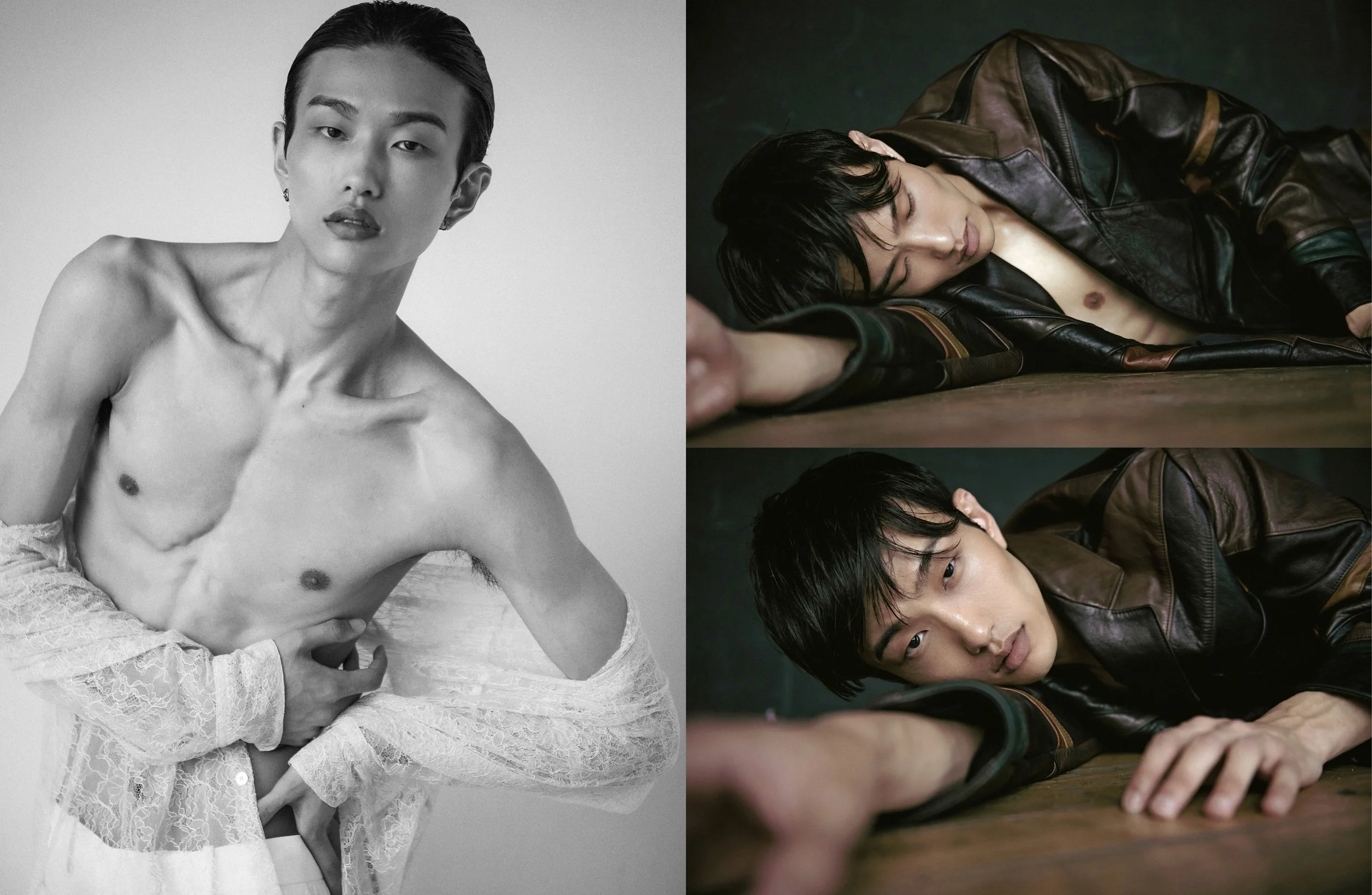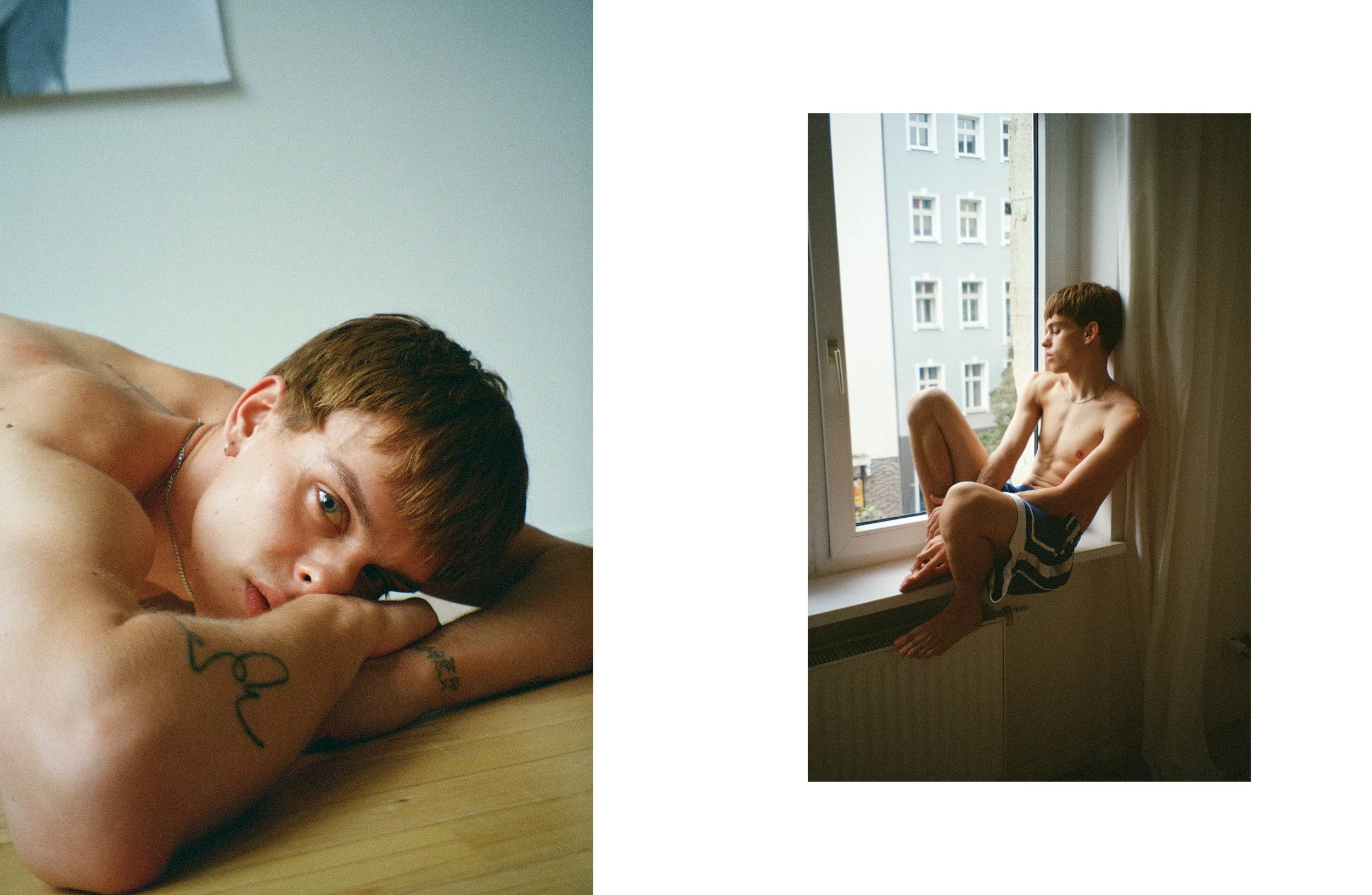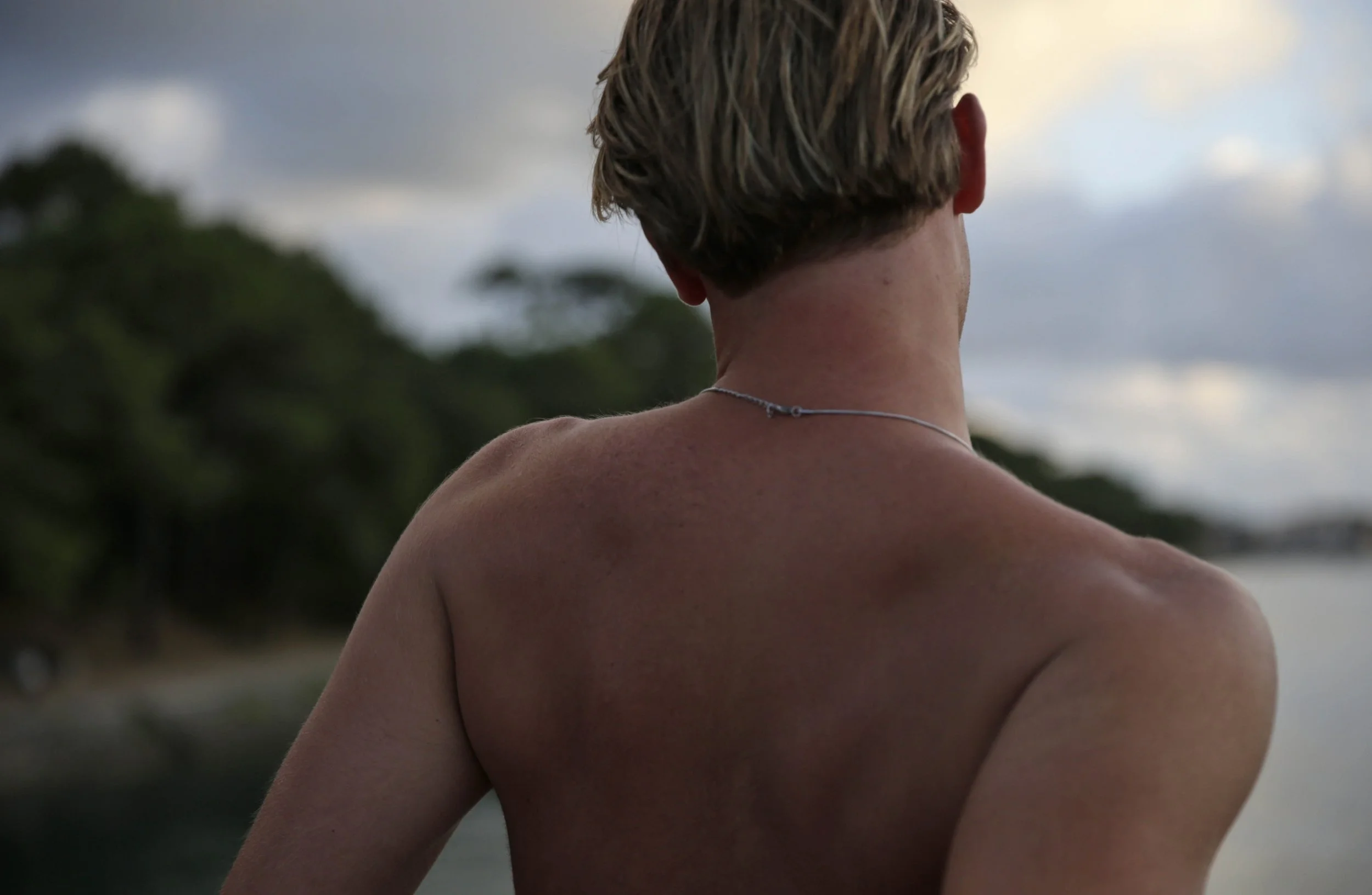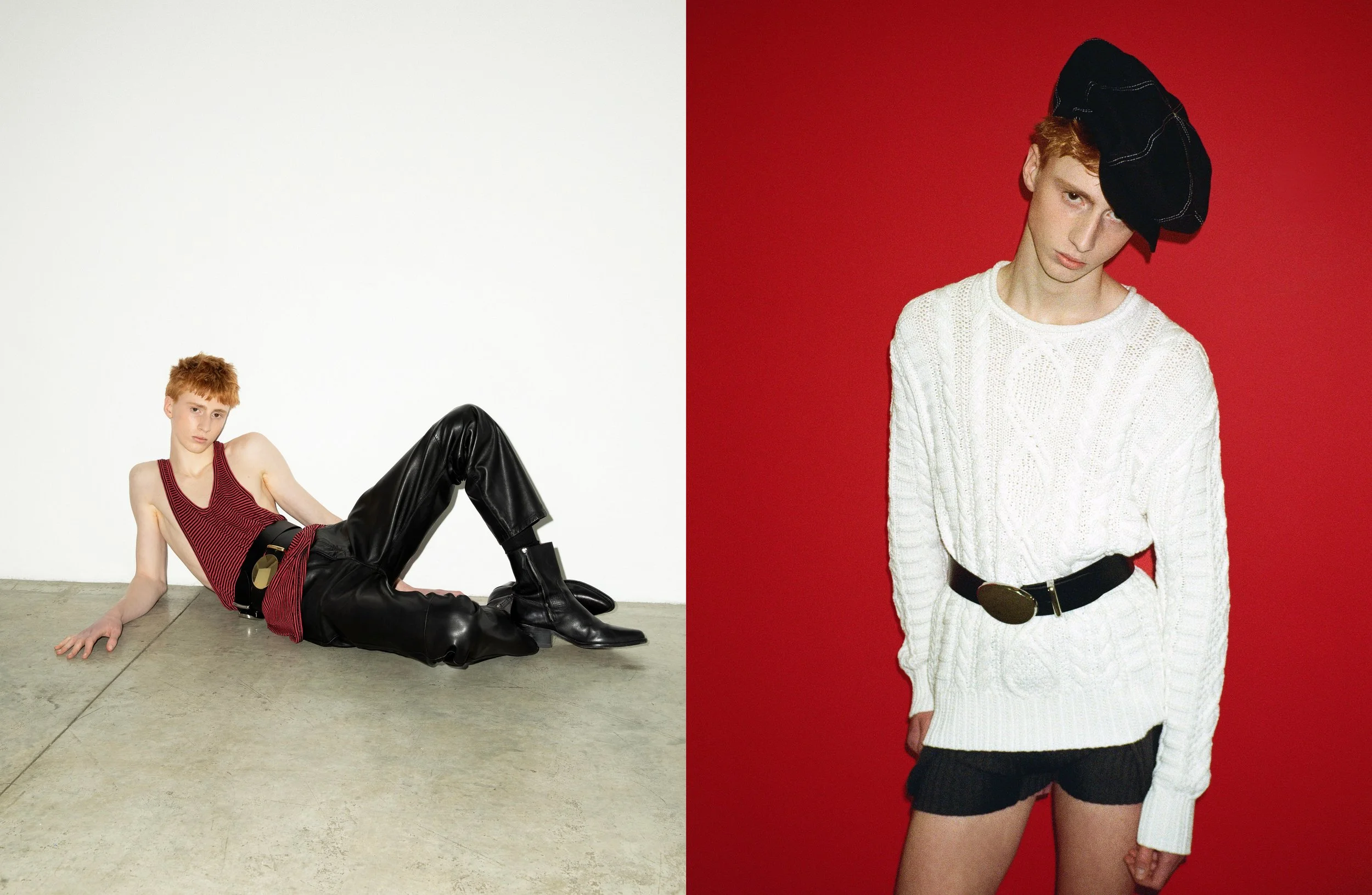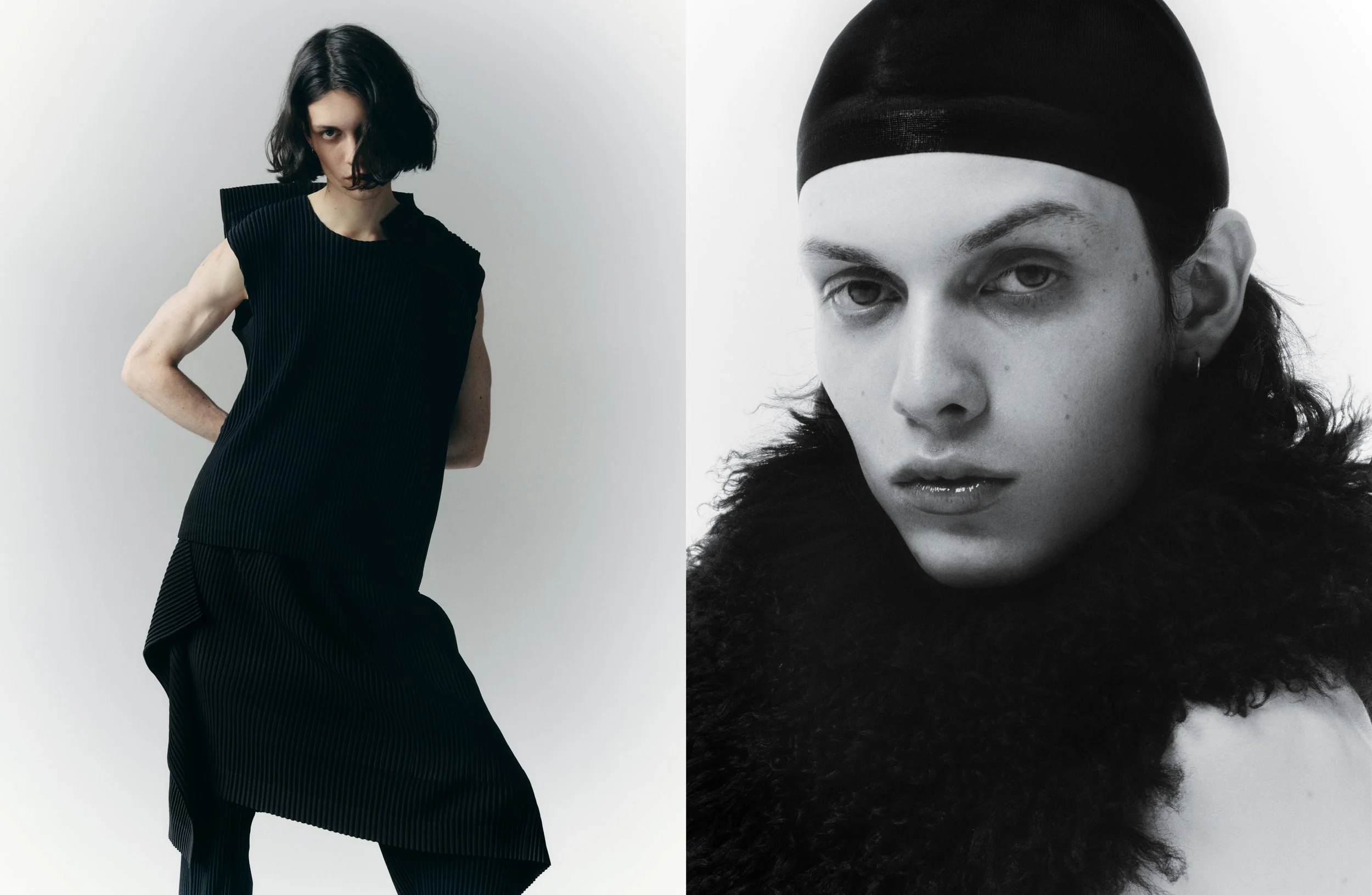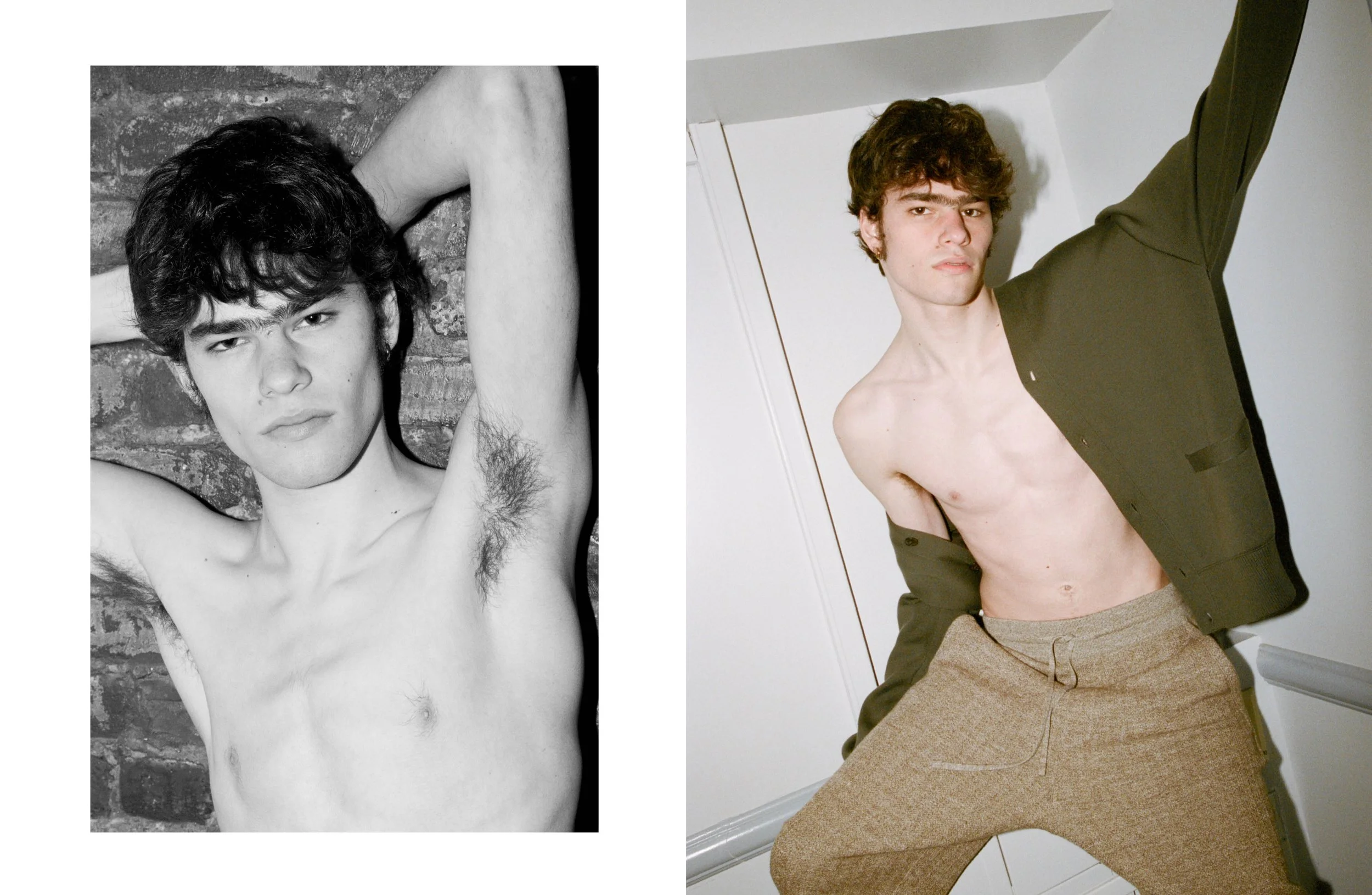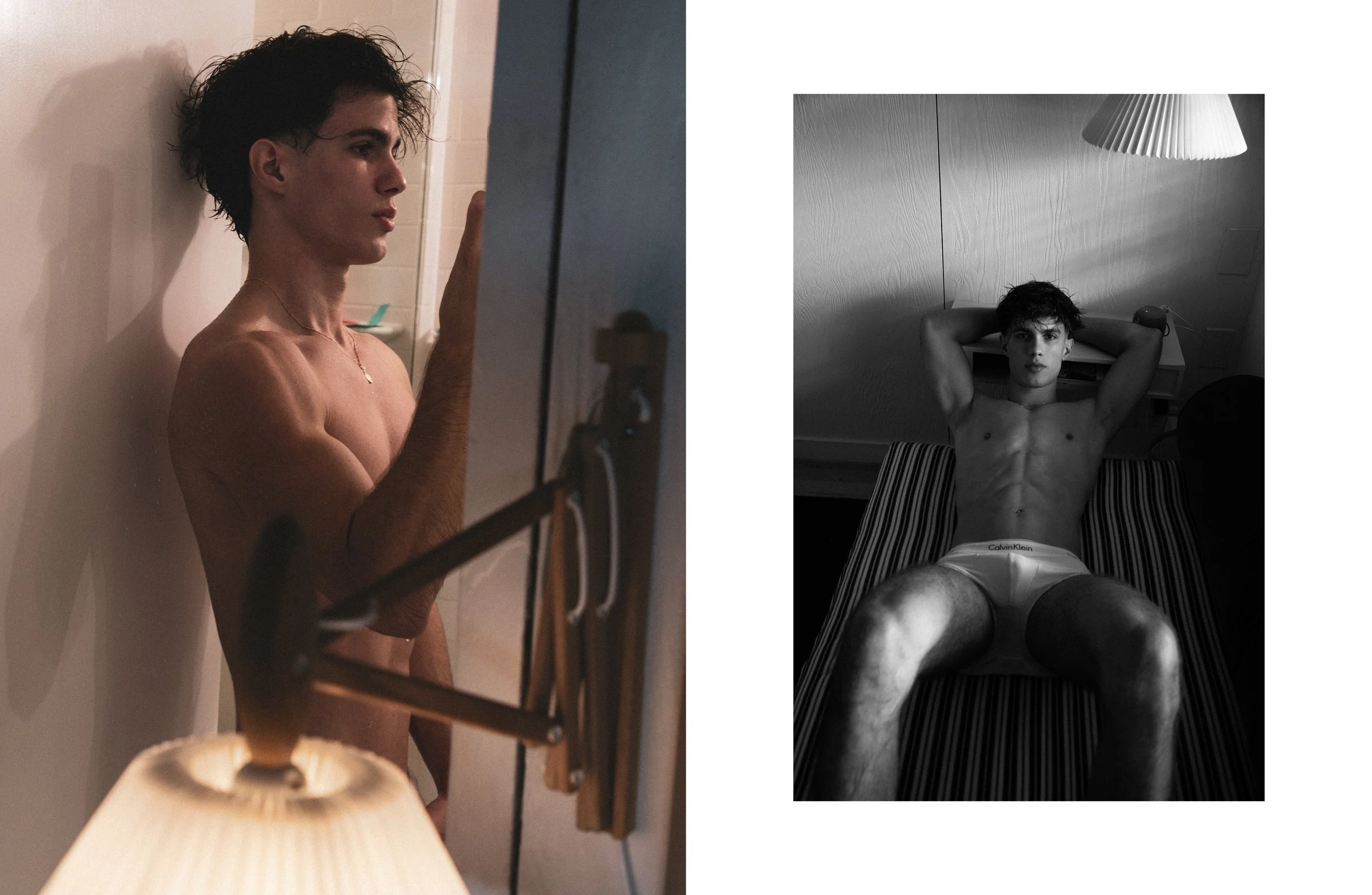Russell Tovey knows a lot about a lot. Meeting me for this interview whilst working out on a treadmill, the English actor and self-proclaimed ‘art geek’ has the impressive ability to simultaneously discuss - in a very animated manner - the abundance of film, theatre, literature and art references that he comes across in his daily research (far too many to mention in this piece!). It’s no surprise then how excited he was to become part of American Horror Story: NYC, the latest instalment of the classic camp horror show, which this season is rich in citations to the burgeoning queer art and nightlife scenes of 1980s New York. In our digital cover story, Russell talks about the thrill of telling nuanced stories on screen and the buzz he gets from working on his popular podcast Talk Art, which breaks through the intimidating nature of the contemporary art world.
Full look Miu Miu & glasses Oliver Peoples
The new season of American Horror Story is full of references to the queer art and nightlife scenes of 1980s New York - the film Cruising, singer Klaus Nomi, the relationship between Robert Mapplethorpe and Sam Wagstaff, or Bette Midler performing at the bathhouses are just a couple of examples. Which of these references were you most excited to see in the script?
All of them because they are reference points that have meant so much to me in my personal existence, and also in my career as inspiration. You know, hearing the stories about Bette Midler and Barry Manilow singing at a gay bathhouse just doesn’t make any sense [laughs], but it happened! And it happened in a lounge where guys would chill out in their towels, while others were hooking up [in different rooms]. So now we have Patti LuPone playing a homage to this story in the show. Cruising is another great example – it’s an incredible movie, and when you watch it now, it is a historical document. It’s a movie that was made in the very, very early stages of the AIDS epidemic in New York, and everybody who is in the background was part of that gay scene depicted in the film – they went to all the fetish leather clubs in the city, and many of them died within years of this movie being released. And now, when you watch that movie, there’s that unfathomable realization of what was just around the corner. Also, at the time, the film was very controversial within the community – the queer people didn’t like it, there was a lot of friction surrounding its release, and no one’s touched it since. So for Ryan Murphy to look at it, reference it and make a homage to it feels incredibly exciting. It’s something that he does [so well] – he takes risks, he charters uncharted territories, and I think that’s really thrilling.
Left Top and skirt Dolce&Gabbana , belt Jil Sander
Right Jacket Louis Vuitton
Was Crusing one of your main references while you were getting into the role you’re playing in the show?
Yes – when Ryan offered me the role, he said that my character was in some ways like the Al Pacino character in the film. He was playing an undercover cop who wasn’t gay, but the guys that were being killed in the city looked like him, so the police force decided to use him as bait. However, what we’ve done with my character, Patrick, is that we’re meeting him at a point where he’s left his wife for a man – a character inspired by Larry Kramer, someone who’s completely proud and confident in his identity - but he’s still closeted within the force because it’s an incredibly homophobic environment at the time. And that makes me think of another character I played, Joe Pitt in Angels in America, who was a closeted Mormon that was having an affair and leaving his wife – for me, Patrick is an extension or a partner to Joe Pitt’s journey, and now, I can use all of that angst, that pain, that turmoil that I had with Joe to create this new character.
Throughout the course of the series, we are slowly introduced to Patrick’s darker side. What do you find most fascinating about him as a character to play?
Well, I think that as an actor, you want to play complicated, nuanced and dark roles. The scripts for the show were getting written as we were starting to shoot, so in some ways, I hadn’t fully realized exactly what was at stake for Patrick – it all started to unravel even more as we went along. But yeah, I’ve always been drawn to characters that are multifaceted and complicated, and who don’t always mean what they say.
Left Full look Dior Men by Kim Jones
Right Top Versace
Stepping into the AHS universe for the first time, what impressed you the most about the way in which Ryan [Murphy] is running this ship?
I’m really amazed by his attention to detail and his ability to hold so many stories in his head at once – there are so many themes, so many references. He’s like Stephen Fry when it comes to pop history, queer history, horror history, or the history of serial killers of the world. He’s an incredibly inspiring and fascinating man. His achievements are beyond, and he continues to reinvent, challenge and make work that is fresh. He creates the zeitgeist.
Early next year, you will be also starring in Richard Eyre’s film adaptation of Alan Bennett’s play Allelujah - why is it a story that you wanted to tell?
Alan Bennett and I have had a strong connection. I was in the original cast of The History Boys, which changed my life, and I also did a small part in the film The Lady in the Van. I mean, it’s Alan Bennett, why would you not want to do it? He’s a British Arthur Miller, he tells our stories. It’s a project that is a love letter to the NHS, a funny and joyful movie with national treasures like Judi Dench and Jennifer Saunders! I think it’s a really important story and what we did is nuanced and special.
Jacket & pants Gucci, sweater Prada, shoes J.W.Anderson
A couple of years ago, you started your own very successful podcast Talk Art, which has just recently hit 5 million downloads. Congratulations!
Thank you very much! Yeah, it’s been one of my biggest joys and one of my proudest achievements. It’s something that’s come out of pure enthusiasm and being a complete geek – me and my friend Rob [Diament, co-host] wanted to create a space where we could nerd out about something that we are both obsessed with.
You’ve spoken to many great artists, curators and collectors over the years - which of the guests were you most nervous about interviewing?
Weirdly, I get nervous for every guest because I want to make sure they feel comfortable, happy and not under pressure. Some people are incredibly shy, some are incredibly confident, but that’s the human condition and no interview’s going to be the same. I always go into it making sure that I’m prepared – I do all my research, Rob does his research, and we never share notes so that we can have a balanced conversation. Whether it’s an emerging artist, a celebrity or a gallerist, we always want to do our best and facilitate an experience where they can feel like they can be open, honest and happy. So I get nervous with every single one, but I also get such a buzz after we’ve finished every episode. They’re never a chore.
Left Full look Miu Miu
Right Pants Prada, shoes Tod’s
Who’s someone that you’re dreaming of interviewing, but haven’t yet?
David Hockney! I think we would make it a two-episode special because he’s so masterful and such a big part of history. He’s so inspiring and has lived through everything – he lost loads of friends to AIDS, experienced what it was like to be queer when it had to be coded, he lived in London and Los Angeles, but he also knows what it’s like to be from the north of England. His colloquialism is so accessible, and yet he’s an absolute art history and world history icon!
I know that you are currently working on your second Talk Art book - what are the themes that you want to explore in this publication?
The second Talk Art book is all about the interviews – we’ve curated an incredible selection of conversations that changed us, showcased important voices and connected with the audience. We’ve compiled them all, and also, we’ve put in hints, tips and references that will make it very clear for people who want to go on this art adventure. For me, it’s something that you can have next to your bed or carry around with you while on a train or bus – you pick it up, you read one interview, you put it down and you think about it. We want to make people feel like they can get in [into this world]. They might not feel like they can go in the front, but we are opening a little side door and going, ‘Come in this side here, we’re gonna show you what it’s like!’
…
Interview by Martin Onufrowicz
Photography by Alvin Kean Wong at Seen Artists
Fashion & production Alexey Kazakov
Grooming by Thomas Dunkin at Art Department
Location Scouting by Andy Butthol
Photographer’s assistant Yo-yo
Location Toya Horiuchi' artist studio
